The following is an article which I originally published on my personal website in 2015. For a more condensed biography of Kootenai Brown, please check out this link.
The Adventures of Kootenai Brown
Perhaps best remembered today as the major impetus behind the founding of Waterton Lakes National Park, John George “Kootenai” Brown was one of Western Canada’s greatest frontiersmen. In 1839, Brown was born into a long line of Scotch-English military men in County Clare, Ireland. He lost his parents shortly thereafter in the Great Irish Famine and was raised by his paternal grandmother. When he was eighteen years old, the Irishman joined the ranks of the British Army and sailed to India to quell the Sepoy Mutiny of 1857. Having gained an appetite for adventure that would not be satiated by British military life, Brown left the Old World for the New, never to return. His subsequent adventures on the Canadian and American frontier include:
- Travelling across Panama and north up the Pacific Northwest
- Prospecting for gold in the Cariboo Rush of 1860’s
- Working as a law enforcer in the gold rush at Wild Horse Creek, British Columbia
- Leaving the goldfields of the Rocky Mountains for the infamous whiskey trade of the Canadian prairies
- Escaping a war party of marauding Blackfoot braves near Medicine Hat, Alberta
- Surviving an Indian shootout at Portage la Prairie
- Riding in North Dakota for the Pony Express- the dangerous American trans-continental courier service
- Narrowly escaping torture and death at the hands of Sitting Bull’s Sioux
- Hunting buffalo with the Metis of the Red River Valley
- Wolfing in Montana
- Dodging the hangman’s noose after a deadly altercation in Fort Benton, Montana
- Serving as Chief Scout for the Rocky Mountain Rangers during Louis Riel’s Northwest Rebellion
- Fighting to preserve the natural beauty of the Waterton (formerly Kootenay/Kootenai) Lakes region in a rapidly-changing world
Part 1: The Seven Seas
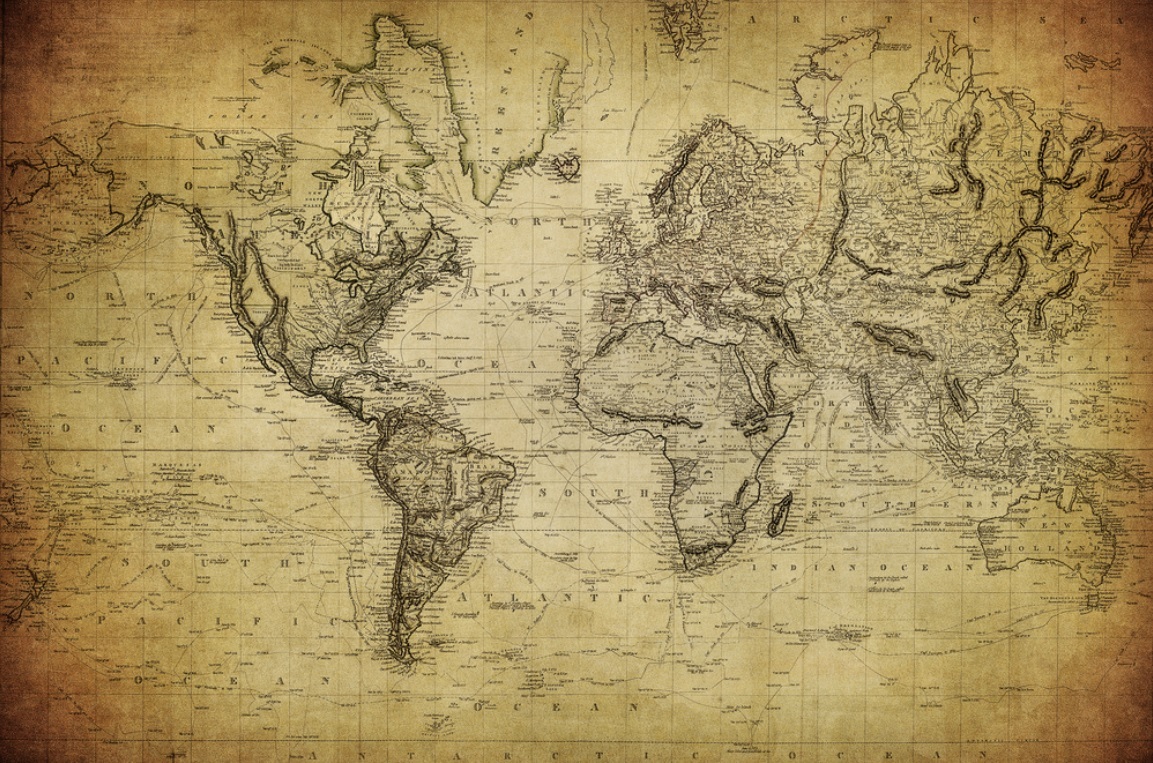
Early Life
John George Brown’s was born on October 10, 1839 in Ennistymon, County Clare, Ireland. Orphaned at a young age during the Great Famine (Gorta Mor/Irish Potato Famine) that ravaged Ireland from 1845 to 1852, Brown was largely raised by his widowed paternal grandmother, Bridget Sophia Brown (nee Butler) in Clonmel, County Tipperary, Ireland. As John Brown hailed from a long line of Scottish-English military men, his grandmother naturally sought to steer him towards a military career.
In those days, military men had to purchase their commissions, as well as any subsequent advances in rank. Brown’s grandmother, being of limited means, could not afford to purchase her grandson’s commission. Accordingly, when John Brown was 16 year old, his grandmother wrote to Lord Henry Hardinge, Commander-in-Chief of the British Army, and requested that her grandson be granted a gratuitous commission in Her Majesty’s Armed Forces on account of his father and late grandfather’s dutiful service to the Crown. After forwarding a copy of her grandson’s baptismal certificate to the Military Secretary in London and writing another letter to Lord Hardinge, Brown’s grandmother was informed that John had been placed on the commission list and would enter the ranks once he passed a requisite examination at the Royal Military College at Sandhurst.
Brown studied for the exam- which likely spanned the subjects of English, arithmetic, algebra, Latin, French or German, and the geography of Great Britain- took it and passed with the highest possible credit. However, in spite of his excellent results, Brown was not granted his promised commission. Undaunted, Brown’s grandmother began a long and stubborn battle with the War Office, writing a series of increasingly eloquent entreaties that were all similarly rebuked. Finally, her wish was granted when the (East) Indian Rebellion of 1957 came to a head, leaving the Army in desperate need of officers. On December 13, 1857, John George Brown was commissioned as an Ensign without purchase in the 8th (King’s) Regiment of Foot, a 170-year-old unit (at the time) with a distinguished campaign record.
Service in India
On January 14, 1858, Brown joined Number 12 Company of the first Battalion Eighth Regiment. After undergoing basic training at the regimental depot in Chatham, Kent, the 18-year-old officer was put in charge of 21 private soldiers and dispatched to India.
The voyage to India, which began in Gravesend, Kent, took four months. The ships followed the route of the British East India Company down the Atlantic, around South Africa’s Cape of Good Hope, up the Indian Ocean and into the Port of Calcutta. By the time Brown and his 21 men arrived in India, the skirmishing that had characterized the previous few months had abated. Instead of facing the musket balls of Indian sepoy rebels, Brown and his men were subject to gastrointestinal illnesses and boredom. They spent their days in India around Fattehgurh, the Army’s headquarters, performing typical regimental duties without ever seeing combat.
Brown’s service in India was relatively short. On December 2, 1859, the forward units of the first Battalion were recalled to Britain. Brown- after shining his parade boots and polishing his brass buttons for a regimental review by Lord Clyde, commander of the British Forces, and a formal ball held in the honour of Lady Canning, wife of the Governor-General of India- proceeded with his men to Calcutta. On May 5, 1860, he boarded the Clara, a full-rigged vessel, and began the long voyage back home.
On the return voyage, the Clara made two stops. The first stop was at Simon’s Bay near Cape Town, South Africa, where the crew obtained fresh water and provisions and a chance to stretch their legs. The second stop was in St. Helena, the British-owned isle in the middle of the equatorial Atlantic. There, military men marched from the dock at Jamestown to the Valley of Geraniums- or the “Valley of the Grave”- to see the late Napoleon Bonaparte’s last residence (after the Battle of Waterloo in 1815, Napoleon was exiled on St. Helena until his death in 1821) and original resting place (Napoleon’s bones had since been moved to Les Invalides in Paris). The Clara reached England in September 1860. Eleven deaths had occurred during the 124-day voyage.
Panama
As a result of his experience in India, Brown became disenchanted with military life. The low wages, the lack of adventure and the impossibility of advancement (Brown’s meagre ensign salary did not afford him the ability to purchase a promotion) likely contributed to his discontent. When his regiment returned to its headquarters in Gosport, Brown took a two-week leave of absence in order to reassess his future and spend Christmas with his grandmother in Ireland. It was possibly during this leave of absence that Brown first seriously considered heading west across the Atlantic to take his chances in the goldfields of western British North America, which were a hot topic in the British Isles in lieu of the 1858 Fraser River Gold Rush.
After returning to duty and serving for some time as the senior ensign (all other ensigns had likely resigned or purchased a promotion) in Gosport, and later in the regiment’s new headquarters in Aldershot, Brown retired from the Army in November, 1861, ostensibly to take care of his grandmother in Ireland. On January 31, 1862, Brown’s grandmother, who had featured so prominently in his life, died, and along with her Brown’s last incentive to remain in Ireland. Shortly after her death, Brown, along with his friend Arthur Wellesley Vowell (the son of a prominent Clonmel lawyer; a fellow veteran of the 1957 Indian Mutiny), travelled to Liverpool, England, and boarded a steamship bound for Panama Isthmus (the narrow strip of land that links North and South America). The two friends hoped to travel north from the Caribbean and strike it rich, or to at least find some adventure, in the newly-discovered Cariboo goldfields of interior British Columbia.
After about three weeks on the Atlantic, the steamship that bore Brown and Vowell entered the port of Colon, Panama. There, Brown and Vowell purchased two surprisingly expensive train tickets and travelled west through the jungled mountains, across the Isthmus, to Panama City on the Pacific coast, where they hoped to board another steamer bound for San Francisco. According to Brown, the journey across the Isthmus was slow, as the steam locomotives burned wood instead of coal and the railway underwent perpetual maintenance due to the harsh jungle conditions through which it passed.
Upon their arrival in Panama City, the two travellers discovered that the steamship they had hoped to board was undergoing repairs and would not depart for some time. Instead of remaining in the city- in which cholera, yellow fever, malaria and other infectious diseases ran rampant- Brown and Vowell opted to explore the Chagres River by boat. During their sojourn, they subsisted on the fish that they caught and an alligator that they bagged.
In later writings, Brown described his prevailing impression of Panama:
“I thought I knew something about hot countries- I had recently lived in India- but the heat in Panama was different to that in India. When rain fell on our hands or face it was almost hot enough to scald… We found white men keeping stores at Panama (City) and Colon, the two terminals of the railway. The soldiers were a queer-looking lot, dressed in khaki with bare feet. The natives seemed to fish for a living and for recreation they gambled and promoted cock-fighting. I have travelled a good deal in my day but a more miserable crowd of people it has never been my misfortune to behold.”
After their hunting-fishing trip, Brown and Vowell returned to Panama City and boarded a Pacific Mail Steamship Company vessel bound for San Francisco.
The Pacific Northwest
The unexpected delay in Panama, as well as the expensive train and steamship tickets, left Brown and Vowell nearly broke. Upon their arrival in San Francisco, the two adventurers discovered that they lacked the funds to travel further north. Out of necessity, they searched for jobs. In no time, Brown and Vowell found themselves driving horse teams laden with goods from the old wharf uptown to the rough district in the lower part of town. This was Brown’s first experience with horses, and he admitted in later writings that he “didn’t like it one bit”.
Once Brown and Vowell had saved up enough money to purchase a steamer ticket, they boarded an Oregon and California Steamship Company vessel and travelled to Victoria, British Columbia. They arrived at the future capital of British Columbia on Vancouver Island in late February, 1862. Said Brown of Victoria:
“Victoria in 1862 had no idea of ever becoming a capital of anything. It was just one of those little places. Any prairie town in Alberta is as big as Victoria was then… Only an occasional boat landed at Victoria and it carried adventurers looking for various forms of excitement on the Pacific… Chopping poles in the vicinity of Victoria kept me afloat during my short stay of one winter. The most interesting man there I remember was Governor Douglas (the Governor of Vancouver Island who would initiate the construction of the Cariboo Road [not to be confused with the Old Cariboo Road] in May of that year) of the Hudson’s Bay Company, who was head bamboo chief.”
When Brown and Vowell had saved enough money to purchase gear and provisions, they boarded a steamship, crossed the Strait of Georgia to the mainland, and travelled a short ways up the Fraser River to New Westminster (then the capital of Colony of British Columbia and presently a part of Vancouver Metro). Although there is no documentation on the route the two adventurers took, it is likely that they outfitted themselves in New Westminster, travelled further up the Fraser to Port Douglas, and took the rough northward Lillooet Trail that stretched from Port Douglas, through Pemberton, to Cayoosh Flat (present-day Lillooet). From there, Brown and Vowell almost certainly took the rugged Old Cariboo Road that ran northeast to the Cariboo goldfields around Williams Creek.
By all accounts, the trail from New Westminster to the Cariboo goldfields was a brutal one that could only be traversed by men and women of considerable character and physical strength. Evidently, Brown and Vowell were men who possessed such qualities, as they reached the Cariboo goldfields several weeks after their departure. There, on Williams Creek in the spring of 1862, the two partners began to pan for gold.
Part 2: The Canadian Rockies
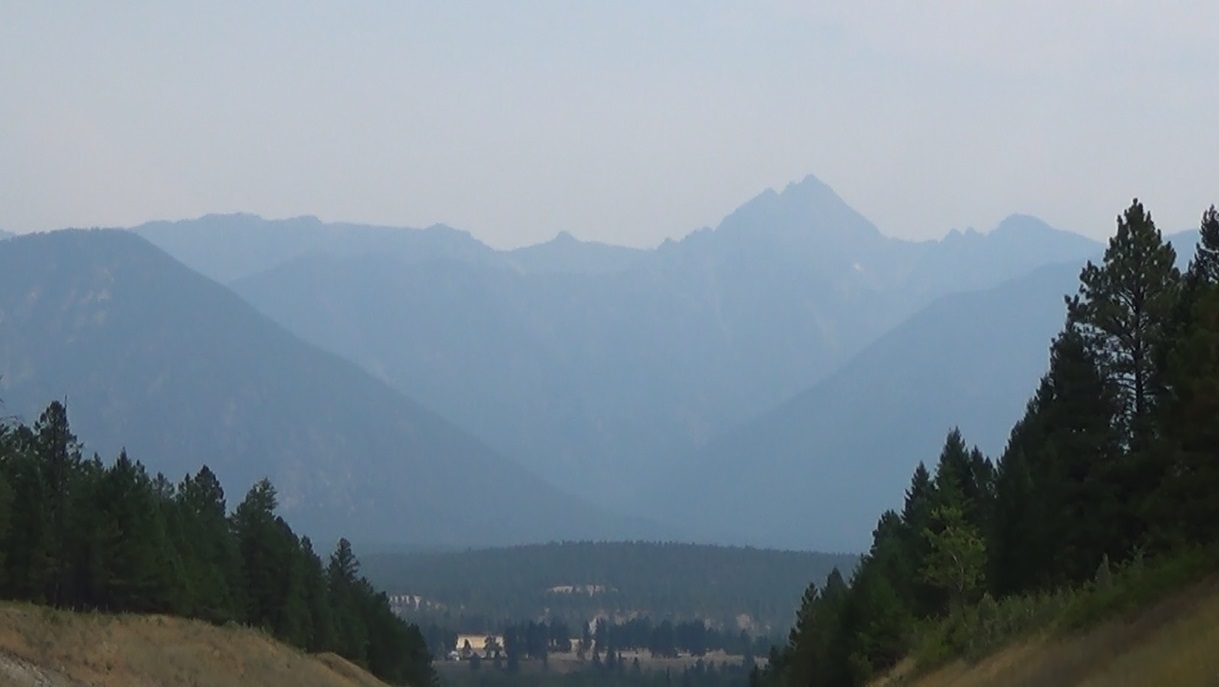
The Cariboo Goldfields
It did not take long for Brown and Vowell to realize that the Cariboo was a wild and perilous place more akin to the lawless American west than to a typical British colony. Throughout the course of their prospecting, the two partners became increasingly wary of the desperadoes who roamed the goldfields, intent on preying upon unsuspecting miners. This danger presented itself starkly in the summer of 1862, just several months after Brown and Vowell arrived in the Cariboo. On July 26, 1862, three Jewish storekeepers- “Dutchy” Harris Lewin, Charles Rouchier, and David Sokolosky; who were travelling south to New Westminster from the Cariboo- were shot to death and robbed of their jewelry, watches, hats and a combined sum of $13 000 cash. The murderers were caught many years later in Montana and were subjected to American justice.
Like many others before them, the prospecting and mining efforts of Brown and Vowell were largely unproductive. Sometime in the late summer or early fall of that year, Vowell cut his losses and returned to Victoria. Eventually, Vowell would become the Gold Commissioner in the Kootenay Mountains and Superintendent of Indian Affairs for British Columbia. Unlike his partner, Brown decided to spend the fall and winter in the Cariboo, specifically in the settlement at William’s Lake.
Sometime in October, 1862, when he was spending the night at Williams Lake House on Williams Lake, Brown witnessed a deadly shootout between two rivals. He wrote:
“I was at Williams Lake House for the night and there was a big crowd. As usual a monte game was in progress, but because it was a slack season in mining the stakes were small. Gilchrist, a professional gambler, was dealing Spanish Monte. Now to make this story clear, I’ll have to go back to San Francisco. It appears that some years before this night… Gilchrist had a dispute in a card game in Frisco with another man whose name I cannot recall. The two pulled guns but were separated by friends. They, however, vowed that if they ever met again they would kill on sight.
While Gilchrist was playing inside the saloon at Williams Lake House, his enemy from San Francisco rode into camp. A man who knew them both said to the newcomer: “your old enemy is inside dealing Monte.”
After the stranger had put his horse away he came into where the game was in progress, but Gilchrist did not notice him as he was “keeping” the game. The visitor approached the table and threw down a twenty dollar gold piece on a card. This was rather in excess of the amounts that were being played that night so Gilchrist looked up to see who had plunked down the gold. Instantly, both pistols were pulled. The newcomer missed and somebody threw up Gilchrist’s arm, and his bullet missed the man he intended it for, but flew across the room and struck a young Englishman right in the forehead, killing him dead.
Most of us, when the shooting had begun, made for the doors and windows, and the room was partially cleared. When we saw the young fellow fall we rushed back. The trouble maker from ‘Frisco managed to get his horse and got away, and we never saw him again. Gilchrist, the man whose shot found a victim in the Englishman, came back with his six shooter in his hand.”
Gilchrist’s case came before Judge Matthew Baille Begbie. In his report to the Colonial Secretary buttresses, Baille identified the unfortunate “Englishman” in Brown’s account as an Irishman named Pearce, and Gilchrist’s adversary as a man named Turner. He summed up the case by stating, “This would have been of course “death by misadventure” in California- in England, Gilchrist would probably have been hung- in British Columbia it is not perhaps an altogether unsatisfactory result that Gilchrist was convicted of manslaughter and sentenced to Penal servitude for life…”
Several months after the shootout, in the winter of 1862, Brown left Williams Lake for a time and went trapping with another prospector in the area. In about three months, Brown and his partner made about $3000 (currently equivalent to approximately $70 000 CAD) trapping marten. After spending the rest of the winter in William’s Lake, Brown used the money he had acquired to start another mining venture in the spring.
Brown’s subsequent mining venture in the spring of 1863 was moderately successful. He used the profits to fund another mining venture the following year which was completely unsuccessful. At the end of the 1864, Brown had little to show for his toil in the Cariboo other than his stories. In his own words:
“I had no money when I went into Cariboo and I had none when I came out in 1864, but I had a little fortune for a while in between. Like thousands of other miners I made and lost a fortune in two years. When I left Williams Creek I had fifty cents in my pocket; my clothes were in rags; I had no shirt and no socks, but I had a pair of good boots. When I got to Boston Bar, a little village on the Fraser River, I still had fifty cents in my pocket.”
Brown left Williams Creek by way of the south-flowing Fraser River in hopes of finding employment. Upon arriving in Boston Bar (about 65 km north of Hope, British Columbia), he joined a crew of swampers. This crew was charged with transporting provisions and supplies from Boston Bar up the Fraser River to Kanaka Bar (a small village about 15 km south of Lytton, British Columbia). Said Brown of the job:
“It was no easy job, but, while it took a good man to do it, no man wanted to do it unless he was broke and down on his luck. From Boston Bar up river for twenty-five miles was a mad channel of white water. Huge canoes made of cedar logs, carrying five tons of cargo… had to be cordelled- that is hauled with a rope by the crew on shore- all the way. It took four days to make the twenty-five miles up stream from Boston Bar to Kanaka Bar…
We were paid $6 a day and board on the boats on the Fraser River, but the work was no sinecure. Sometimes the boat would stick and we would have to take the cargo ashore and “pack” it with hand straps a couple of miles or more over the sides of mountains impassable to horses and wagons.”
Wild Horse Creek
Once Brown had earned enough money from his job hauling goods from Boston Bar to Kanaka Bar, he travelled further down the Fraser River to New Westminster and outfitted himself with a coat, suspenders, pants and a hat. There, in BC’s first capital, 26-year-old Brown found employment as a Constable in the Colony of British Columbia’s Civil Service.
Almost immediately after his induction into the Civil Service (in June, 1865), Brown was dispatched to newly-discovered goldfields of Wild Horse Creek, located deep in the interior. He set out for his post, travelling from New Westminster up the Fraser River to Fort Hope (present-day Hope, British Columbia). From there, he took the route that would eventually become the Dewdney Trail, travelling east from Fort Hope through Vermillion Forks (present-day Princeton, British Columbia), Rock Creek, present-day Grand Forks, present-day Trail (Trail, British Columbia, is named after the Dewdney Trail that would later run through the area), present-day Cranbrook, and ultimately to Wild Horse Creek (near present-day Fort Steele, British Columbia). The journey likely took around 15 days.
As soon as he arrived at his post, Constable Brown discovered that the Wild Horse Creek goldfields were as wild and lawless as the Cariboo with which he was so familiar. The ex-miner quickly discovered three counterfeiters who were making purchases with imitation gold dust, and confronted them accordingly. Brown recounted this incident in later writings:
“Three men came into Wild Horse and succeeded in passing several thousand dollars worth of bogus gold dust. It was an amalgam composed of 75 percent copper, 5 per cent lead and 20 per cent gold. It was a very good imitation…
Well, these three fellows- Kirby, Conklin and a third whose name I forgot… these three brought in the amalgam, bought goods and paid for them with it. They were pointed out to me at once and I marked them as suspicious-looking characters. When it was discovered that a lot of bogus nugget were in circulation on the creek, I went to arrest the three strangers. They were living in a one-roomed cabin and I knocked at the door. Getting no reply, I burst open the door and Kirby grabbed for his gun. I had him covered and I called out to him: “Throw up your hands or I’ll make a lead mine of your carcass.”
While I was getting Kirby out of the cabin, the other two escaped. After putting my prisoner under lock and key, I organized a posse and we were not long in locating Conklin and his pal, both of whom were also put behind bars. Just after this happened and before the prisoners could be brought to trial, I… left Wild Horse Creek. My successor, whom I recommended to Judge Cox as a suitable man for the job, had a streak of bad luck with the three men I left him in the jail.
Among the pieces of good advice I offered the young fellow was never to allow more than one prisoner out at a time and never, on any account, to turn his back on a prisoner. I regret to say that one morning he thoughtlessly disregarded this advice and let all three out at a time to wash for breakfast. He turned his back for a moment when Conklin “put the mug on him” (threw his arm under his chin and held his head back) then gagged and tied him. Then they took his horse and what money he had, his clothes and his gun and made a clean get away. The jail was in a lonely apart of the creek and their escape was not known till the butcher called for the meat order. He knocked at the door but got no response. Returning with a blacksmith, the lock was pried off and on entering they found the constable bound and gagged in a cell, but the cells of the prisoners were empty. A search party was organized but no trace of the desperadoes was ever found.”
According to a letter from Peter O’Reilly (the Gold Commissioner in the Kootenays at that time) to Arthur Birch (the Colonial Secretary), the three counterfeiter were named William Kirby, Joseph Konklin, and Ozias Harvey. In a later letter to New Westminster, O’Reilly demanded the resignation of the young constable by whose negligence the conmen escaped, whom he identified as Constable Lean.
Shortly after the incident, Brown resigned from the service, ostensibly due to a substantial reduction in pay resultant of the Colony of BC’s 1865 budget cut. After his resignation, Brown, along with four other men, purchased and briefly worked on a claim on Wild Horse Creek. The venture was unsuccessful. After selling their claim to Chinese labourers (who had been working on the Dewdney trail), Brown and his companions struck out for Fort Edmonton (present-day Edmonton, Alberta). There, they planned to prospect on the North Saskatchewan River. In Brown’s words:
“I had been placer mining in the Cariboo district of British Columbia for two years and came down to Wild Horse Creek, where with four others I staked a claim near the mouth of the creek. It was not “panning” very well, so we sold out to a company of Chinamen for one hundred dollars apiece and one horse. We took twenty-five chips apiece and gambled for the horse- and I won…
Having disposed of our holdings on the creeks, the five of us packed through the South Kootenai Pass and soon after started for Edmonton, where we heard they were mining placer gold on the (North) Saskatchewan River. We had no very clear knowledge of where Edmonton was, and there was no one to tell us.”
Part 3: The Canadian Prairies
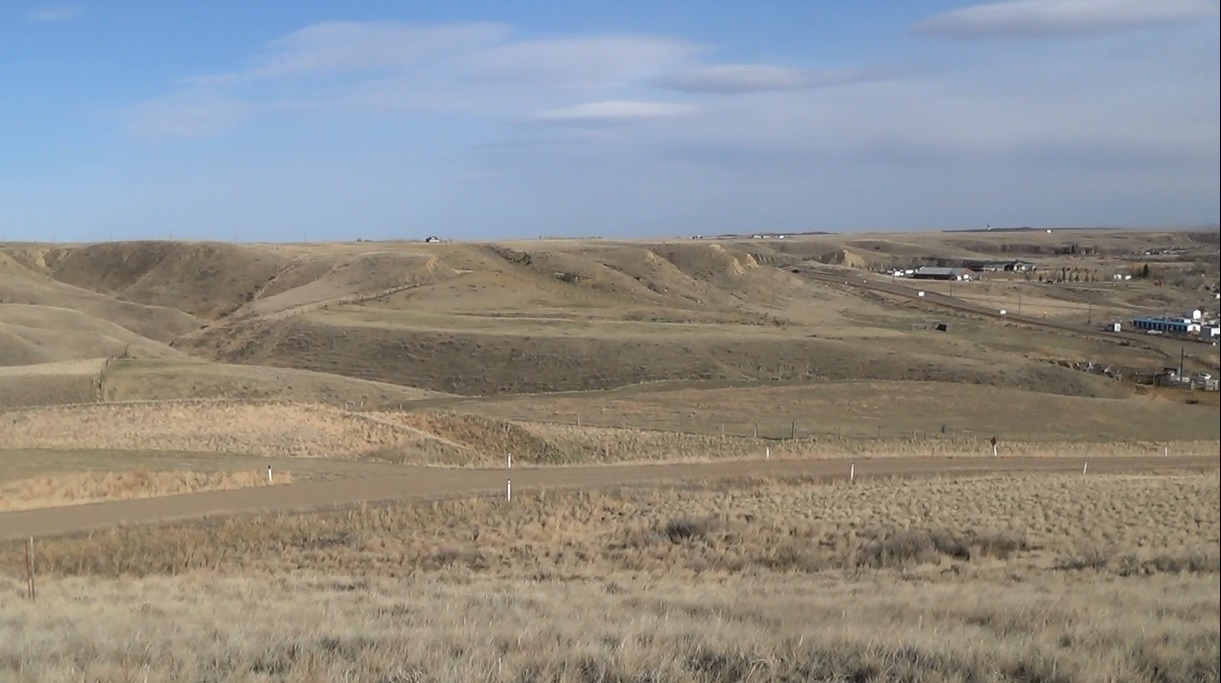
Skirmish with the Blackfoot
Bound for the supposed goldfields of the North Saskatchewan River near Fort Edmonton, Brown and his companions travelled up Wild Horse Creek to its junction with the Kootenay River near present-day Fort Steele. The prospectors continued south down the Kootenai River, crossed the river on horseback (on horses they likely purchased from the local Kootenay Indians) and travelled east across the northern tip of Tobacco Plains- a relatively flat area (compared to the surrounding Rockies) in southeastern British Columbia and northwestern Montana – and the Flathead River country.
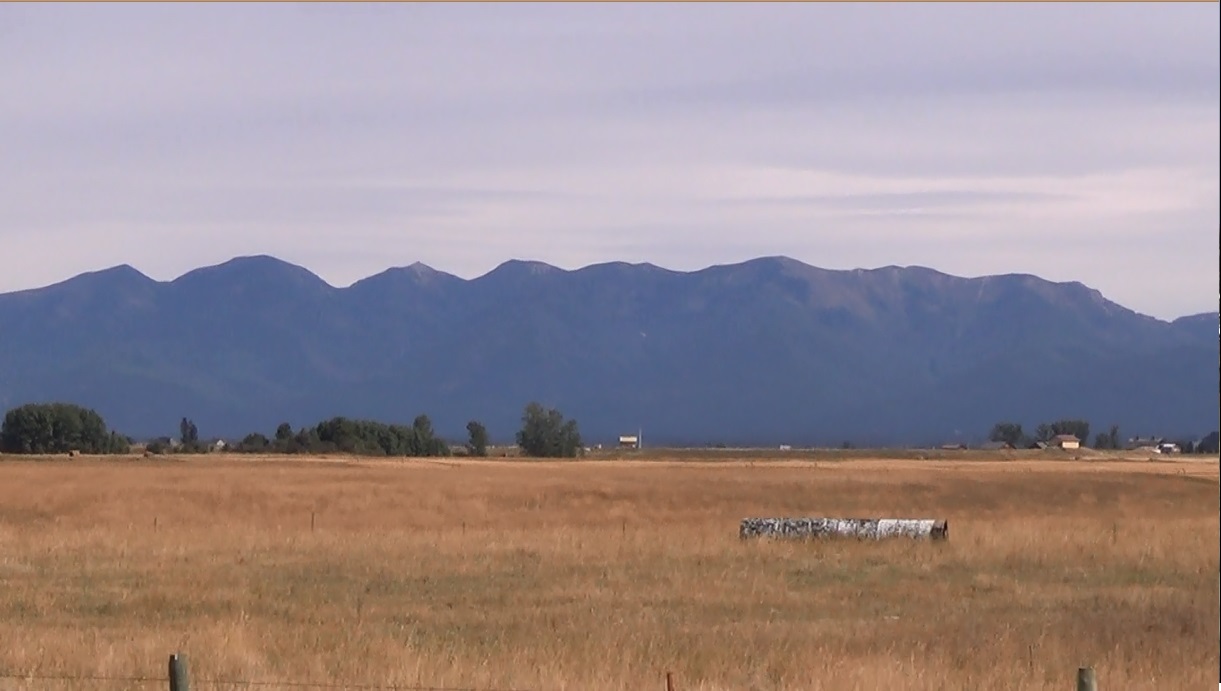
At the eastern end of Tobacco Plains, Brown and his companions came to the Clark Range, a sub-range of the Rocky Mountains that separates southeast British Columbia from the foothills of southwest Alberta and the Canadian Prairies beyond. They crossed the Clark Range by traversing the South Kootenay Pass and emerged from the mountains in present-day Waterton Lakes National Park.
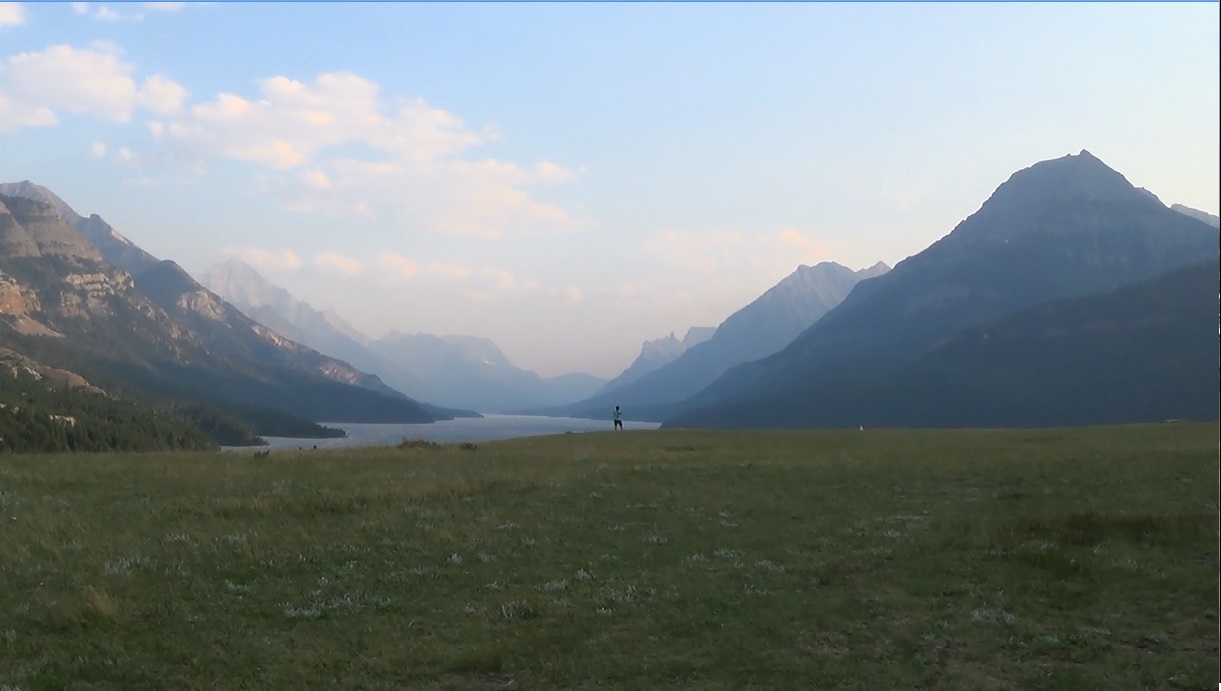
The Waterton Lakes area made a lasting impression on Brown, which he recounted in his writings:
“Emerging from the South Kootenay Pass we hit the foothills near the mouth of Pass Creek and climbed to the top of one of the lower mountains. The prairie as far as we could see east, north and west was one living mass of buffalo. Thousands of head were there, far thicker than ever range cattle grazed the bunch grass of the foothills. We killed a three-year-old bull just at the entrance of the pass. None of our party up to this time had ever seen a buffalo.
I had three horses. I was riding one and had the other two “packed”. Each one of the others had a horse and between them two pack horses. As we rode through the mass of buffalo, the great beasts just moved off slowly. We made a lane of only about one hundred yards and they paid little attention. When we fired on them they would run off a few hundred yards and begin grazing again. We only shot for what meat we needed and we packed this on our already heavily packed horses…
I recall my first impression of the Kootenay Lakes, now known as Waterton Lakes… Coming down from the mountain, where we got our first glimpse of the buffalo, we soon reached the prairie shore of a large lake at the further side of which a mountain rose to a sofa-like peak among the clouds. This mountain was afterwards called Sofa Mountain and is so named on the topographic maps of that region in the Rockies.”
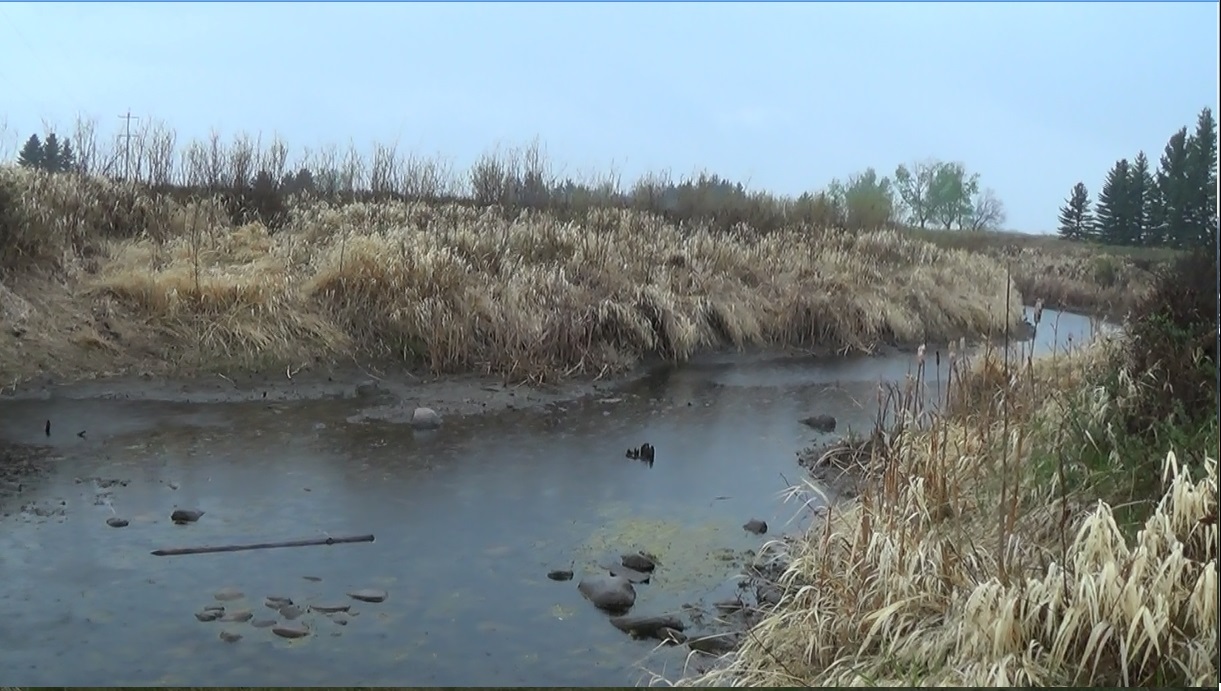
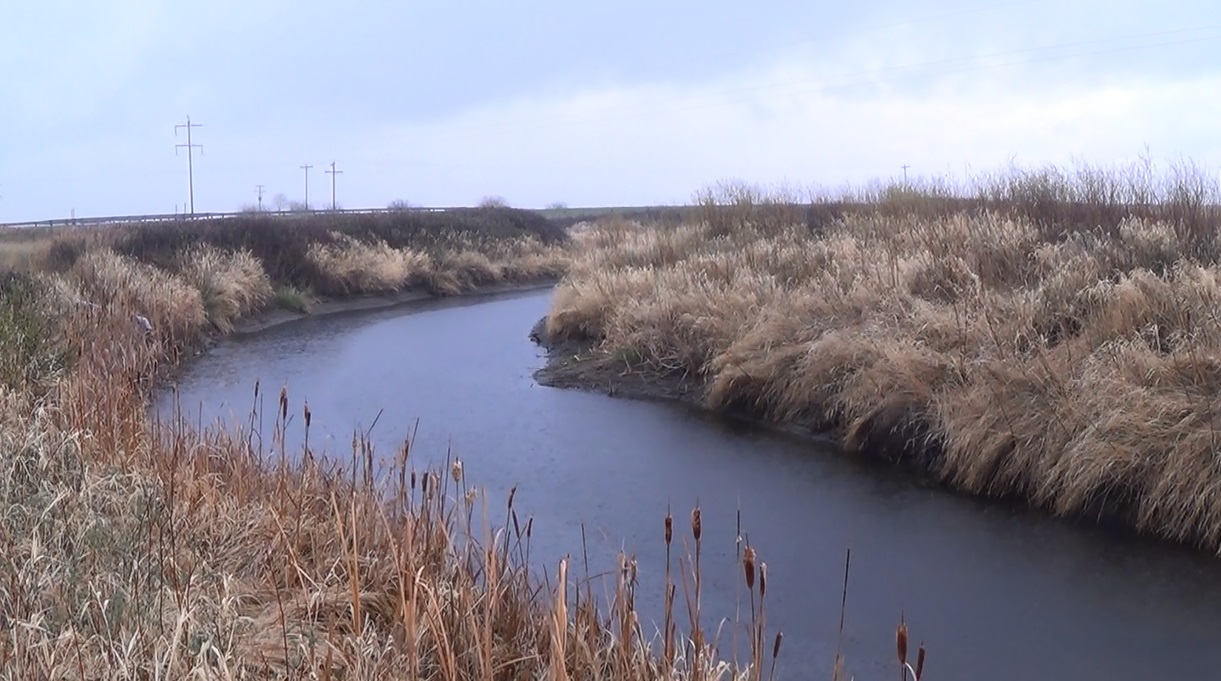
Brown and his companions travelled further east, leaving the foothills of the Rockies for the more perilous prairies. There, they met with all manner of prairie hazards, the most dangerous of which was the warlike Blackfoot Indians:
“Around Seven Persons Creek we found hundreds of rattlesnakes and were not anxious to camp there very long. We saw very few coyotes on the open prairie, but hundreds of wolves ran the country in bands… A few coyotes were encountered in badlands, coulees and foothills where they are found today. At the time of which I speak, there roamed all along the south branch of the [South] Saskatchewan River hundreds of grizzly bear, small grizzlies, but grizzlies just the same. Buffalo, mired in the quicksands when fording the stream became their victims…
It was Blackfoot territory then and we knew it and were watching for them…
My first conflict with the Indians was at Seven Persons Creek, near what is now Medicine Hat. With me were the three pals with whom I left Wild Horse Creek. We were looking for an encounter with the Blackfeet because we were in their territory. We were travelling in a north-easterly direction, believing that we were on our way to goldfields in the vicinity of Edmonton. At a clump of cottonwood trees we stopped to eat. As we were eating we were suddenly surprised by a flight of arrows… and we knew that our first “war party” had begun. The arrows used by the Blackfeet were of chokecherry wood with a point of flint or obsidian of different colors. I remember finding one on the top of Sheep Mountain years after. It had a point of moss agate and I presented it to Lord Lathom on the occasion of one of his visits to the mountains of Southern Alberta.
We thought our time had come. The Indians had no firearms but they were all young bucks, thirty-two of them, no old men or war-women- all young warriors- a war party, out for anything they got (presumably a wandering band of Crees), perhaps a white miner making his way across the continent to Wild Horse Creek. We got up and started shooting at anything we could see. We had not much cover as the Indians had driven us away from the cottonwoods, many of which were two feet in diameter. If the Indians had had guns they would have killed all four of us. But we had the shelter of some brush and killed two Indians before they tired of shooting arrows and wandered off.
It was at this time that I received an arrow in my back close to my kidneys. It was a miracle that I was not killed. I thought my time had come, but I pulled it out- an arrow head two and a half inches long and the head was out of sight. The jagged edges caught the flesh as I pulled it out and gave me great pain. I had a bottle of turpentine and, opening up the wound, one of my companions inserted the neck of the bottle and when I bent over, about half a pint ran into the opening made by the arrowhead. This was all the doctoring I ever got and in a few days I was well again.
We were using old muzzle-loaders with balls and caps and we carried bullets in our pockets and in our mouths. Two Indians fell victims to our intermittent fire and the rest, after about twenty minutes’ fighting, rode to the [South] Saskatchewan River and, jumping their horses into the stream, swam them across, taking one of my horses and one other with the. The Indians… all rode bareback and guided their ponies by rawhide halters with one strap tied through the animals’ mouths. They never waited to pick up the bodies of their fallen comrades.
That was the last I saw of seven Persons Creek till 1885, when, as chief of scouts in the Rocky Mountain Rangers, I went with several rangers to the scene of our encounter. This was twenty years later, but we found two Indian skulls and extracted five bullets out of the cottonwoods on the creek bank.”
Journey to Fort Garry
After their skirmish with the Blackfoot, Brown had a falling out with his companions:
“I was very angry that all the others had advised following the directions we did to get to Edmonton. I was for heading closer to the mountains. We had a row over this… I charged the other three with being responsible for getting us into the fight with the Indians, for the loss of my own and another’s horse, and for the wound in my back, which since the application of the turpentine had become very painful.
One squabble resulted in a split-up there and then. The other three said, “We’re going on to Edmonton,” and they crossed the river where the Indians crossed. They each had a horse. The poor fellow whose horse was taken by the Indians was afoot. I was sorry for him. I had two horses, and the thing I suppose I should have done was to give him one. But I had all my earthly belongings packed on that horse, which consisted mostly of ammunition for hunting. Anyway, I didn’t give him the horse. I suppose, if I had, he would have forded the river and gone off Edmonton bound, with the other three.
So we got together and decided that we would follow down the course of the [South] Saskatchewan River. I reasoned that it must flow into the Hudson’s Bay or the Atlantic Ocean and that it would eventually bring us to the fringe of civilization, probably to Fort Garry, of which place we had heard at Wild Horse Creek.”
Although Brown and his new partner had the same route in mind, they decided to split up for reasons unknown. Brown kept the two horses and built a bull boat (a small simple boat consisting of a wooden frame covered in buffalo hide) in which his partner planned to travel down the South Saskatchewan:
“I made a bull-boat for my horseless friend. This was very simply done. The bull-boat was the only watercraft used by Indians in the very early days on the plains of Western Canada. There was so little need to navigate any water that plains Indians never became expert canoe men. They devised makeshift watercraft that would enable them to cross streams or make short journeys by water. The bull-boat was the only thing used at that time. The frame, about six feet in diameter, and as near a circle as can be made, is of willow saplings bent and twined in the shape of a basket about eighteen inches deep; over this is stretched a green buffalo hide, fastened by strips of skin at the top and the whole is allowed to dry. The bull-boat cannot be paddled in the usual way. The occupant must sit in front with equal weight behind and pull the craft along with his paddle. It is never used against the current… The boat must be taken out of the water several times a day and dried. If this is not done water will soak through, fill the craft and all will go to the bottom. Sometimes the bull-boat was made very large, taking three or four buffalo skins. It would then hold three persons and carry enough provisions for several days.
I had no trouble killing a buffalo for the boat I made for my companion, and putting in what meat it would hold, I pushed him off in it for- well, I don’t know where. I thought I might run across him at Fort Garry, for the river flowed in that direction, but I was not sure.”
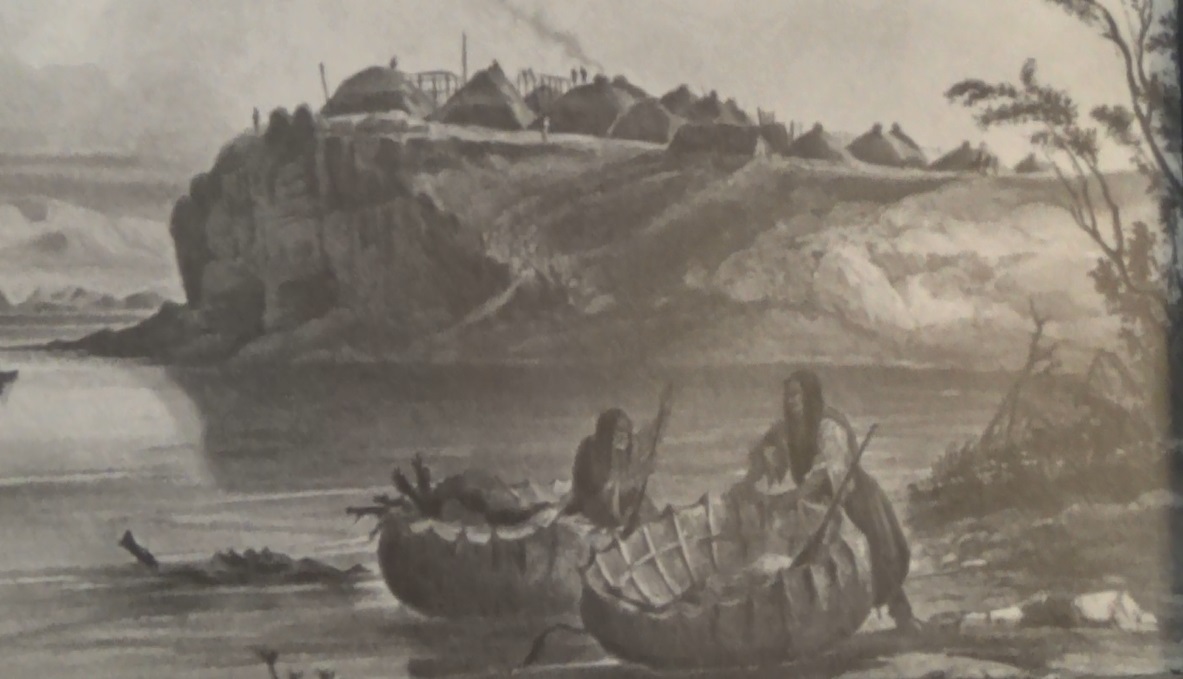
And so Brown travelled northeast, roughly following the flow of the South Saskatchewan River. Quickly surpassing his waterborne companion, he found himself leaving the prairie for the aspen parkland that characterises (present day) central-western Alberta, central Saskatchewan and southeastern Manitoba. There, he stumbled upon Duck Lake, a French Metis settlement about 87 kilometers northeast of present-day Saskatoon, Saskatchewan:
“I remember my first sight of Duck Lake. My determination to follow the [South] Saskatchewan River brought me to this French half-breed settlement in the early fall, and I accepted their invitation to spend the winter there. I found about fifty families in the settlement who came from Fort Garry. They were hunters and moved from place to place in the hunting season, stopping wherever it was convenient. In winter they made Duck Lake their home and built rude houses out of the small timber from the river bottoms… There was not a man in the settlement who could speak English. Fortunately I could speak good French and I soon picked up the Cree Indian language…
Shortly after I arrived at Duck Lake, a half-breed came out to where I was “still hunting” one day and said. “Mr. Goldtooth has just come to the settlement and asked if you were here. He wants to see you.” I had no idea who this man might be, but I rode into camp with the half-breed and he took me to “Mr. Goldtooth”.
The man I had made the bull-boat for at Seven Persons Creek had a big gold tooth in front of his mouth and it was his arrival the half-breed was announcing.”
Brown and “Mr. Goldtooth” stayed with the Metis throughout that winter of 1865/1866. During that winter, Brown spent much of his time constructing a wooden sleigh. Just before the snow began to melt in the early spring of 1866, Brown hitched his two horses to the sleigh and, along with “Mr. Goldtooth”, proceeded southeast. The two companions travelled for six weeks at a steady pace down the Carlton Trail, which extended from Fort Carlton, Saskatchewan (a Hudson’s Bay Company trading post that lay about 25 km east of Duck Lake) to Fort Garry, Manitoba. After passing through Portage la Prairie, the old historic settlement (currently a city) south of Lake Manitoba, Brown and his partner arrived at Fort Garry.
Shootout at Portage la Prairie
Brown and “Mr. Goldtooth” only stayed in Fort Garry for about a week. “Mr. Goldtooth” travelled further east, while Brown joined the ranks of the local, largely American whiskey traders who, with their underhanded tactics and illicit wares, diverted much business from the Hudson’s Bay Company post near Portage la Prairie. To the impoverished Brown- who had spent the previous decade working a variety of laborious, generally low-paying jobs- the allure of lucrative whiskey trade must have been too enticing to ignore. However, as the adventurer would soon discover, the inherently dishonest, high return industry was not without its pitfalls:
“”Goldtooth” had had enough of the west and returned to Eastern Canada, but I went to Portage la Prairie and began trading with the Indians. I got supplies from Charles House, an American trader… I traded between Portage la Prairie and White Mud River, twenty miles west of Portage la Prairie, mostly with Chippewas and Crees, who were in small scattered camps trapping [musk]rats, mink, foxes, coyotes and wolves. This was the summer and winter of ’66 and ’67.
My trade was mostly in clothing and whiskey, but I had blankets, thread, beads, tea, sugar and a few odds and ends, but my big money was made in whisky, which I sold for thirty dollars a gallon. In Indian camps the very dogs got drunk and it was not very pleasant being around when a whole camp got drunk… At White Mud River there was an Anglican mission in charge of a half-breed clergyman. A trader named Fry, an old English half-breed, Willox Spence, and an old American, Andrew Jackson, were dickering with the Indians and catching furs and fish. It was only a short distance to Lake Manitoba and they fished in the lake in the summer time…
I had no permanent living place at White Mud River and was hardly in the same house two nights in succession. I sold my horses while in these camps and bought dogs…
I was in the habit of taking furs to Portage la Prairie to John Gibbons, who ran a store there. When I arrived on this occasion there were about thirty Red Lake Indians from Minnesota. I could speak their language and Johnnie persuaded me to stay around for the day. In the store there was a cousin of Gibbons, Bob Olone [spelt O’Lone in an account by A.C. Garrioch, a Portage la Prairie clergyman; identified as Hugh F. “Bob” Olone by historian Norma Jean Hall in her article Hon. Hugh Francis Olone, Town of Winnipeg] and Billy Salmon [spelt Sammon in Garrioch’s account]. The store was out of Portage about two miles in the direction of the Hudson’s Bay store. In those days all traders sold rum and whiskey to natives… On this day [May 28, 1866, according to Garrioch] the red men had run out of fur before their thirst for whiskey had been quenched. They had been bringing in rats, otter, beaver, lynx, fox, but the supply had been exhausted. Chief Starving Wolf [possibly identified as “Kwingwahaka, the Wolverine” by Garrioch] had come in for a free drink. By this time they were all very drunk and I didn’t like to give them anymore. So I said to him: “My friend, you know I am not a man of two tongues. I’ll give you one drink and that’s the last you’ll get”. So he drank his drink and away out of the door he went. It happened that we had two puncheons of rum, which being too large to go through the door, we had put into the storehouse just fifty yards behind the store. After the Indians had gone out, Johnnie Gibbons said to an old fellow, Jimmy Clewitt, who was hanging round the store: “Go out into the storehouse and bring in a gallon for the house. It’s a long time between drinks.”
A moment after Clewitt had gone out, I looked out of the window and saw Chief Starving Wolf jump through the door after him, carrying a gun in his hand. I yelled to Olone. Instantly we heard the report of a gun and saw Clewitt running for his life for the store. We also saw the Indian emerge from the store with a large copper pot which we assumed was full of rum, and so it was. Clewitt made the house, and falling into the porch, groaned: “I’m done for.”
In the meantime, although we didn’t know it, it appears that Billy Salmon, the young clerk, was afraid that something would befall old Clewett and followed him out to the storehouse. They were both there when the shot was fired. Salmon also was able to make the porch and rolled over the top of Clewitt, yelling that he was shot.
The Indians immediately began peppering away at the store from their hiding place behind the storehouse. Odd bullets came through the chink and there was rattling and clashing of all sorts of stuff on the shelves of the store. We three survivors, Gibbons, Olone and myself grabbed Hawkins muzzle loaders, and whenever the leg or wing of an Indian appeared around the corner he was nailed. Even Clewitt, whom we expected was dead, jumped up and, grabbing a rifle, began peppering away through a window. After several rounds had been fired, an Indian jumped out from behind the storehouse, probably to get a good aim, and Clewitt and myself both shot him. Another Red Laker ran out to pull in his body, but while getting over a fence he was shot in the leg and fled, dragging the broken member after him.
About this time Olone shouted that we were almost out of ammunition. Had this become exhausted we were goners, for nothing else would have kept twenty-eight Red Lake Indians from entering the store and murdering every last one of us. The nearest house was that of De Marias, a French half-breed. So Olone, gun in hand, gave a yell and started as fast as he could out of the front door and away for help. He de good time and brought back about twenty half-breeds and whites. When the Red Lakers saw reinforcements coming they ran off…
I have said that everyone of us got drunk, but not till we had looked after Clewitt and Salmon. Clewitt, we found, had not been shot but stabbed. He carried the knife between his ribs from the storehouse to the porch, pulling it out when he got up to use the rifle… Poor Salmon was not so fortunate. He had two balls in his body, we knew not where. A doctor had just come to Fort Garry, so we made Billy as comfortable as possible in a light wagon belonging to John McLean and started for the fort. Fearful that we might be ambushed by Indians, Gibbons and Co hired an escort of six mounted men and we drove by easy stages to the doctor. [Salmon] was given every attention… but at the end [of ten days]… we had to bury him at what was called “the new church”, down the river from the settlement about four or five miles.”
Part 4: The American Frontier
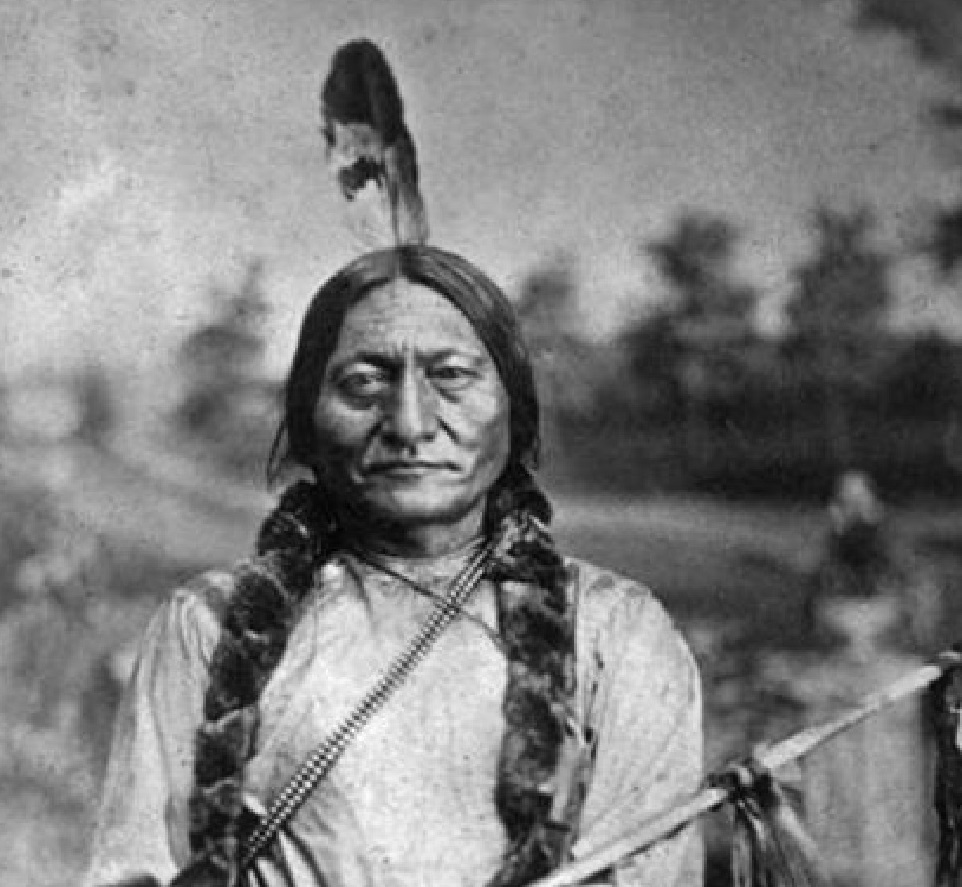
The Pony Express
In spite of the incident at Portage la Prairie, Brown continued to trade with the Indians for over a year. Throughout that time he frequented Fort Garry (present day Winnipeg, Manitoba), where he once had his image captured, perhaps for the first time, on photograph:
“I sat for a tintype photo at Fort Garry and was told it was the first ever taken at the Fort. The man with the camera was a Swede named Olson, from St. Paul.”
More than a year after the shootout, in the early summer of 1867, while visiting Fort Garry, Brown met a recruiter for the so-called “Pony Express”, a courier service that delivered mail across the United States. Ever restless, the Irish adventurer decided to join the predominantly Metis (and sometimes Mexican) ranks of the Pony Express Riders and leave the Red River Valley of Canada for the dangerous American frontier. Upon accepting the job, Brown was tasked with delivering mail across present-day North Dakota, from Fort Totten (about 250 kilometers southwest of Fort Garry) to Knife River:
“I was only in Fort Garry a short time, but while there a fellow came in looking [for riders] for a pony express route in Dakota territory. He took two or three of us to Fort Totten and I began riding from this place to Knife River, a tributary of the Missouri where Theodore Roosevelt afterwards established a cattle ranch…”
Sometime in in the fall of 1867, while delivering mail for the Pony Express, Brown was captured and briefly detained by a band of Sioux. The Indians informed Brown- who had learned some of the Sioux language while trading in the Red River Valley near Portage la Prairie- that they intended to intercept all mail and kill the American riders. The Sioux observed that wherever white men settled, the buffalo disappeared, and were thus determined to keep the Americans from their territory. Shortly after the incident, another mail carrier- a Red River French Metis named Gardepie- was similarly captured by the Sioux and released with a warning.
True to their word, the Sioux of present-day North Dakota killed a number of Pony Express Riders that winter, effectively destroying the company that Brown had worked for:
“There must have been sixty or seventy riders on the route which extended from St. Paul right to Helens, Montana. There were station keepers every fifty or sixty mile. They ran bigger risks than we did, although they were not paid any more money. Indians always knew where to find them. Most of the station-keepers were eventually killed and the company lost hundreds of horses killed and stolen by the Indians. Their enormous losses finally led the company into bankruptcy and they still owe me $400 today.”
Captured by Sitting Bull
With the Pony Express company bankrupt, the United States Army was forced to start up its own courier service. Instead of building a series of posts as the company had, the Army used its own already-established forts spread throughout the country and determined that the commanding officer of each fort would be responsible for seeing mail safely delivered to the adjacent posts.
As most of the American soldiers were too inexperienced with the country to be effective couriers, the Army contracted former Pony Express Riders who were expert horsemen, well-acquainted with the languages of the country, and (for the most part) white. Brown fit all the requirements, and was hired accordingly on April 20, 1868. The Army sent Brown to Fort Stevenson, North Dakota, along with two newly-hired horsemen. These other riders served as replacements for two mail carriers who were killed by the Sioux earlier that spring.
Just twenty five days after Brown was hired, on May 15, two carriers named Charley MacDonald and Joe Hamlin rode out from Fort Stevenson with mail bound for Fort Totten. The road from Fort Stevenson to Fort Totten passed through the Dog Den hills, a sacred ground to the hostile Sioux who populated it. When the two riders failed to return, Brown and another carrier- a Sioux half-breed named Joe Martin who was also employed as an interpreter- took their place. Brown and Martin rode out with mail for Fort Totten on the grey, rainy morning of May 23.
At early evening the next day, with the sky dour and overcast, Brown and Martin arrived at Strawberry Lake, about 60 km southeast of present-day Minot, North Dakota. There, the two riders would come face to face with Chief Sitting Bull of the Hunkpapa Sioux, nearly eight years before the infamy of the Little Bighorn. In later years, Brown wrote of his encounter with the Chief in vivid detail:
“We were within half a mile of Strawberry Lake and it was about seven o’clock in the evening of the twenty fourth of May, the Queen’s birthday. I have good reason to remember the date. We jumped off our horses and crept up to the top of the hill to take a good look for Indians… Getting on our horses again we rode down to cross this coulee and to get to the camping grounds by the lake. Just as we went down the steep bank, the Indians charged on us yelling out, “Don’t shoot, don’t be fools, we’re friends…”
In the dash they made at us Sitting Bull was leading, riding a fine big grey horse… In the melee that followed, Lady Jane Grey, our pack mule, broke away and started for Fort Stevenson as fast as she could travel, but the Sioux took after her, soon captured her and appropriated everything in our pack…
Sitting Bull ordered us to get off our horses and when we did he had us stripped as naked as the day we were born. They took everything, dispatches, mail, guns, horses, clothes… Some of the young bucks began yelling “Kash-ga, Kash-ga”, meaning kill them, kill them. Sitting Bull raised his hand and shouted, “Don’t be in a hurry, we’ll make a fire and have some fun with them.” We understood every word they said, of course, and we knew that Sitting Bull meant some playful mode of torture that the Sioux often inflected on their captives. It might have been sticking pieces of pine pitch or other inflammable dry wood all over the victim’s bare body and setting them afire.
But someone called out, “come over here, we’ll have a little talk.” So we went over to the edge of the coulee… and sat down in a circle. My companion who was a Santee Sioux half-breed said to Sitting Bull in Sioux, “what is the matter with your people? Why do they rob us and talk bad to us. I am a Sioux half-breed, one of your own people. This man with me is a Sioux half-breed too. Why do you want to kill us?”
To this Sitting Bull replied, “I se you are Sioux, but your companion here (pointing his finger at me) looks like a whit man.” Then turning to me he said, “this is true that you are a half-bred?”
In those days I wore my hair frontier style, about twenty inches long…
To Sitting Bull’s question I answered in Sioux, “My father was a white man and my mother a Santee Sioux woman.”
“Well,” he said, “your skin is very white and your eyes are blue, but it may be that you are a half-breed. You talk good Sioux. Why do you help our enemies, the isa thonga?” (meaning the long-knives, the Sioux term for American). I said, “we are poor and just come down from the prairies, and as we were passing Fort Stevenson the soldiers gave us some letters to carry for one trip.”
It was now getting dark and a dispute arose over the disposition of our two horses, Lady Jane Grey, the stuff in the pack on her back, and our personal belongings. To settle the matter, Sitting Bull called his warriors in a council about forty yards from the fire around which we were huddled bare naked. This was on the very edge of the coulee leading into Strawberry Lake. I said two Joe, “Lie down and let us roll into the coulee and they will never miss us.”
“We’ll be killed sure,” said Joe, “but we had better be shot than burned alive.”
I was watching the council circle carefully and as soon as I saw their eyes off us I nudged Joe with my elbow and whispered, “roll, roll.” We rolled about a hundred feet into the coulee and down we sprinted for our lives, bare feet, bare naked as the day we were born, right into the lake.
It was quite dark by this time and as Strawberry Lake was covered al about the edges with cat tails and other weeds that could easily hide a man, we were safe for a time at least, but we didn’t’ know for how long. We were standing in the water up to our necks, with Indians running up and down the shore firing at random into the weeds… It was blowing a regular hurricane and pouring down torrents of rain and this is probably what saved us. Failing to locate us in the lake they conceived an idea that we had run down the road. Anyway, they left us, but we stood in the water for another half hour. Finally, half dead with cold, we stole quietly out in the pitch darkness and scrambling up the bank took to our heels, but not along the travelled road. We kept away from that. After we got away a couple of miles we stopped to get our breath and Joe said, “We’re safe now, we will travel the road again.” So away we went in the darkness toward Fort Stevenson with not as much on our bodies as Adam and Eve in the garden.
The sun shone on us next day and millions of mosquitoes seemed to find out that two naked human beings were available for food. They fairly swarmed upon us and there was not a spot on our bodies as large as a pinhead that they had not bitten.
We arrived at Fort Stevenson early in the afternoon. Our travel was slow during the night but when daylight came and we got our bearings we made good time… There was bastions on the fort and one of the sentries saw us coming. He reported to the Sergeant of the guard, and he in turn reported to the officer of the day that two Indians were approaching the Fort bare naked. The guard was sent out to capture us but when the Sergeant saw who we were he ran to meet us with “what’s up? What’s up?” I replied, “Oh, nothing much. The Sioux have your mail, horses and out clothes, and came very near to getting us. We have walked from Strawberry Lake.”
Brown went on to describe how he and Martin, covered with mosquito bites and with bleeding feet, were presented to Major General Phillippe Regis de Trobriand, “the old Frenchman” who was in command of Fort Stevenson, along with Fort Totten and Fort Buford. Said Brown of de Trobriand:
“He asked us how it happened and, as we related the incidents, he used very unparliamentarily language most of which was directed against the United States Government for allowing such hostiles to be alive. One of the things I remember him saying was, “They should be wiped off the face of the earth.” There was a decanter of whisky beside him and pouring out three glasses we all had a drink. In fact, we had several drinks, and because we had not eaten since noon the day before, the whiskey went to our heads and I suggested to the General that we should go to our quarters before we said or did anything foolish. We were both in such a state that we didn’t care whether we ever got anything to eat or wear. The General agreed and we were taken to our quarters, fed clothed, and our bodies and feet doctored and we were soon asleep. Neither of us were conscious again until next morning.”
De Trobriant’s Version
Major General Phillippe de Trobriant, who met with Brown and Martin after their return to Fort Stevenson, recorded a slightly different version of the riders’ encounter with Sitting Bull in his journal. De Trobriant’s is a contemporary secondary account written shortly after hearing Brown and Martin’s tale over whiskey (specifically on May 26, 1868), while Brown’s account was recorded just before the start of World War I in 1914. It is possible that Brown, due to the deleterious effects of time, misremembered some of the details of his encounter with the Hunkpapa chief, some of which were recorded true in de Trobriant’s journal. True or not, de Trobriant’s account sheds an interesting light on Brown’s adventure, and is worth sharing here:
“The day before yesterday, Sunday, two of our carriers left with the weeks mail to meet those from Totten halfway. They were Brown, an Irishman recently enlisted in government service, and Martin, a half-breed employed since last year. Both knew the country well, spoke Sioux fluently. Toward evening of the first day, they were approaching Clear Lake when they noticed something that looked like buffalo to them. In reality, it was Indians, who, in order not to betray themselves, lay on the necks of their horses, which made them look like the animal for which they wanted to be mistaken. So our men went on their way, while the Hunkpapahs set an ambush for them. Arriving at a narrow ravine through which they had to pass, the carriers suddenly found themselves surrounded by Sioux coming in on them from all sides crying, “Don’t shoot! We are Medicine Bear’s men (an allied chief). We are friends.” And the first ones exchanged handshakes with Joe Martin, who was nearest to them. Brown’s horse took fright and ran away, and some young men ran to bring it back. The pack mule with the despatch pouch and supplies galloped off in an opposite direction, his speed accelerated by fear. When Martin was so surrounded that he could not defend himself, an Indian slapped his hand on the withers of his horse, uttering a cry of triumph, the meaning of which the prisoner could not mistake. He felt that he was doomed. He was immediately stripped of everything, weapons, equipment and clothes. His horse had been taken from him first. Brown was brought back and promptly suffered the same fate. He had been brought back by an enemy riding the well known horse of Charley MacDonald, which set him thinking. When they were in just their boots and drawers, the chief gave Martin an old overcoat to cover himself (for it had poured all day, and was still raining), and he easily recognized it as Joe Hamlin’s. The overcoat was pierced by two bullet holes in the chest and two rents in the back. The chief asked the prisoners who they were and what they were doing on the prairie. They answered that they were half-breeds from the Red River and that they were going to St Joseph to hunt.
Their chief then told them that his men had killed two men and a soldier a few days before’ our two carriers and a man from the convoy commanded by Lt. Smith. “I would not have had the two men from the Red River killed,” said the chief, “but the young men killed them before they found out who they were. “I am the one who killed one of them,” said one of the savages, coming forward armed with MacDonald’s sixteen-shot carbine (Henry system). “I shot an arrow through his body’ he fell from his horse and I finished him off on the ground with a revolver.” Then the two prisoners noticed that the chief was wearing MacDonald’s watch chain and recognized several pieces of his clothing and Joe Hamlin’s on the backs of the Indians. “Let’s kill them,” several of them were saying. “Why waste time talking? Let’s do to them what we did to the others.” At that the chief took the prisoners aside and said to them: “The young men are saying evil things and are ready to do an evil deed. Take advantage of the night that is coming and run away quickly before it’s too late.” He did not have to tell our men twice, and, half naked, they hurried off. Instead of following the direction they had first taken, they ran to hide in the marshy underbrush, making a circle calculated to throw them off pursuit.
It was well for them that they did. The chief had given them life only because he did not yet know that they were carriers. As I have said before, the mule carrying the dispatches had run away. It took some time to capture it, and, those who did feasted on the supplies they found in the saddlebags. When they came back bringing the animal and the packet of dispatches, our men had already left. They took up their trail intending undoubtedly to put them to death; but night had come on, or at least dusk was falling, and they were unable to find them.
[Brown and Martin] wandered around part of the night, and at day-break found themselves still in sight of the enemy. By sneaking in ravines and hiding themselves as well as they could, they hurried away in the direction of Stevenson, where, completely worn out, not having had a mouthful to eat since the morning of the day before yesterday, they arrived today at sunset with no further misfortune.”
Plains Blizzard
After his encounter with Sitting Bull, Brown briefly took up a safer occupation as a storekeeper at Fort Stevenson before returning to his former duties in the fall of 1868. In November 1868, he was put in charge of Fort Stevenson’s mail carriers and remained in charge until June 1869. Although no couriers were lost under Brown’s leadership while on Army business, one of Brown’s side assignments in the late winter of 1869 ended in disaster.
In March 1869, Brown was persuaded to undertake a side assignment in which he would act as guide for a Fort Stevenson carpenter named Richer, who was returning to Canada on account of family business, and Voyles, a veteran of the United States Army. He was to be accompanied by Fort Stevenson’s Private Shank and Mr. Bittner.
On March 7, the party set out on the first leg of the journey, en route to Fort Totten. On March 12, Brown was stricken with snow blindness. To make matters worse, the wind picked up and devolved into a ferocious blizzard on the afternoon of March 13.
The snow storm raged without respite for nearly a week. In the end, Brown and Richer, half dead with cold and hunger, were found sheltering in one of the mail stations between Forts Stevenson and Totten. The frozen bodies of Bittner and Shank, who had wandered off in the storm, were recovered several miles from Fort Totten. Voyles’ body was never found.
Part 5: Living with the Metis
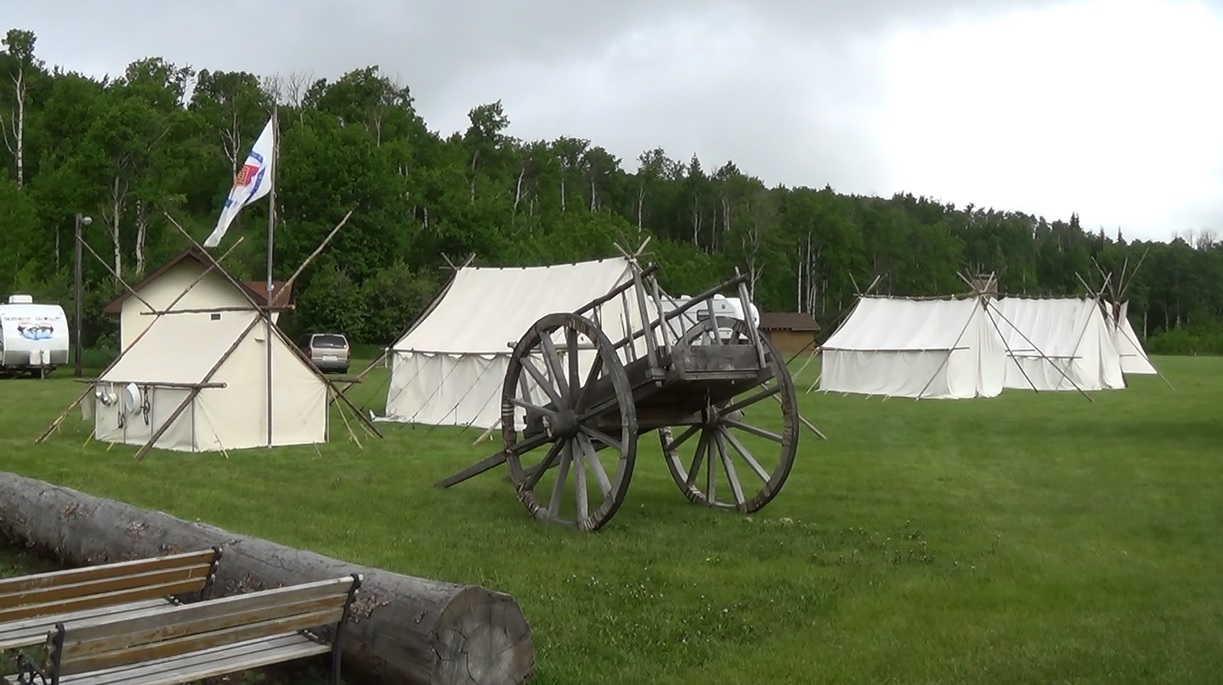
Marriage
On June 19, 1869, Brown’s contract with the Army expired. The frontiersman rode west to Fort Buford, North Dakota, and contracted with the 13th Infantry to operate a military express between Fort Buford and Fort Totten. In the middle of his first route, while in Fort Totten, Brown was requested to undertake a side job that entailed guiding a party, commanded by United States Army Brigadier General W.S. Hancock, on a tour of the region north and west of the fort. Brown accepted, and delegated his unfinished courier business to Metis riders at Fort Totten.
Near the end of the tour, Hancock decided that he and his party should stay for some time in Pembina, North Dakota. During this time, thirty-year-old Brown met eighteen-year-old Olivia D’Lonais, a beautiful French-Cree Metis girl who lived in the village. After a brief courtship, Brown married Olivia on September 26, 1869, in Pembina’s St. Joseph’s Church.
After their marriage, Brown and Olivia settled at Fort Totten and remained there for two years, with Brown resuming his courier work. In August 1871, the couple moved to Fort Stevenson. After a brief hiatus, Brown resumed his work as a mail carrier in November 1871. He continued to work for the Army without event- notwithstanding Olivia’s pregnancy and the subsequent birth of his first child (a daughter)- until June 9, 1874, when he quit his job on account of his salary being reduced by half. Immediately upon leaving the Army, Brown, Olivia and their daughter joined a camp of Canadian French-Cree Metis from the Red River. They would stay with the Metis for nearly three pleasant, carefree years. In later years, Brown recalled his time with the Metis with great fondness.
The Metis Buffalo Hunt
Brown and his family joined the Metis camp just in time to take part in the famous Metis buffalo hunt. The Metis had their own unique style of buffalo hunting that differed significantly from the tradition Indian style, which usually involved herding buffalo over cutbanks or cliffs such as the one at Head-Smashed-In Buffalo Jump. He described the hunt in great detail:
“When the hunting season opened everybody- men, women and children left the wintering places in carts, wagons, and some even with the old travois. We took all our belongings which sometimes did not mean much, but we took them anyhow. After we had travelled out of range of winter quarters in which we had killed off all buffalo, scouts were sent ahead on horseback to find where the buffalo were in numbers sufficient to move the whole camp. Sometimes these scouts would have to travel a hundred miles before returning to report that it was worth while making camp. Often it would be several days before we would make our first stop, but after that we would not need to travel so far. You understand that a little hunting was done all winter and because of this buffalo did not live in large numbers near the camp.
When the scouts returned they would meet the camp which had been following them up, and when near the point where the buffalo were found in numbers, all the riders- between one hundred and fifty and three hundred in number- would range themselves abreast to give every man a fair chance. With the captain of the hunt about the centre of the line and about three horse lengths ahead, we would advance at a slow walk toward the buffalo who would huddle together and show signs of alarm and finally break into a fast walk. The leader of the hunt would yell “Trot”. About this time we would be three hundred yards from the herd. They would shortly break into a slow gallop and the chief hunter would give his final command “Equa, Equa,” meaning, “Now, Now,” and every one of the long line of hunters would spur their runners into a gallop at full speed. From this time on it is every man for himself. Those who had the fastest horses got their pick of the herd. Sometimes a hunter on a very fast horse would have three, or as many as five, buffalo shot before the main body of the hunters got up. A great deal depended on the horse he was riding. Some of them were the best race horses that could be bought on the prairie. Some hunters in a drive of this kind would kill as many as ten buffalo and the whole camp would probably total one thousand head.
It was some experience for a new hunter- dust flying, horns clashing, buffalo bellowing, men yelling, and all going at top speed. The buffalo dare not stop as the rest of the herd would trample over them. There was hardly ever a drive in which someone was not hurt. It rarely ever happened that a hunter was shot, but sometimes he would be knocked off his hose and another rider would run over him. We had to be very careful and, at the same time, we had only a few minutes to do our execution. And we had to remember the buffalo we killed, for each hunter had to skin and transport his own game. In time of scarcity when there was only a small amount of food in the camp, as sometimes happened in later years, a general drive would be ordered by the captain when everything killed was “Minis-a-wak” (common property).”
Brown, who owned a Hawkins rifle that he had carried while riding for the Pony Express and the United States Army, noted the Metis’ relatively primitive equipment.
“In those days most of us had saddles- I suppose three quarters of us had- but not the stock saddles used in the west today… [most] were what we call pad saddles. They were made of buffalo hides and usually stuffed with antelope hair. They were light, only weighing a couple of pounds. The stirrups were made of wood cut from the timbers in the river bottoms and the stirrup straps were made of a two-ply of good six-year-old bull. We used loose ammunition, black powder and ball and cap. We carried the bullets in our pockets, and for immediate use in our mouths. The powder we had in a horn and it was poured haphazard into the barrel and a ball rolled in. Sometime we overloaded and every season there would be two or three hands blown off or a few fingers mutilated by guns exploding…
In running buffalo a hunter with a good horse would kill only prime animals. No calves or yearling were ever killed- nothing but full grown, three, four, five, and six years old. Buffalo live, barring accidents, to about the same age as domestic cattle. We always preferred front quarters of a buffalo because they were fatter and as we boiled our meat in summer, front quarters made the best food. Of course, it was a rule in all half-breed hunting camps that every part of every animal must be used unless it was diseased. Mange was the principal disease, but we frequently found buffalo with lump jaw and occasionally with wounds inflicted in drives or by the arrows of roaming bands of Indians. These diseased or maimed animals were only killed by accident.
The run of the herd would average about one mile. Some of the slow or long-winded horses might run a couple of miles but most of the killing was done in five hundred yards. It was just a miniature battle but the killed were always of the fleeing army of buffalo. A hunter would occasionally be hurt. I remember once breaking my shoulder blade. I had killed six buffalo in a drive, which should have been amply sufficient for the day, but I was riding a fast horse and was too greedy and rode into a bunch ahead of the slow animals that had got behind. A number of buffalo crowded into my horse and he stumbled and fell. I got free of the stirrups and I don’t know how many animals ran over me. When I was picked up by the other hunters I was unconscious, and when I was taken back to camp in a meat cart it was found that my shoulder bone was broken. I was laid up for a week but was not able to hunt for the remainder of the season.
As soon as the drive was over, the women with the children and old men followed on with the carts to carry the meat back to camp. Immediately after the hunter had stopped shooting, he turns back to find the buffalo he has killed. Dropping his bridle rein, his horse feeds about while he cuts up his game. It is all done with a knife- skinning and quartering, and never an axe used. Each hunter must look after the animals he has killed and his woman is on hand to haul it away with a cart. The drive begins as early as possible in the morning. This gives plenty of time to dress the killing and get it to camp before dark at night. A cow and a half was considered a good load for a cart, which of course, was hauled by only one horse. It was the hardest kind of work, skinning and cutting up buffalo in the boiling sun of a midsummer day, and we were always glad when the carts came back for another load as our women always brought a keg of water. We were always very thirsty. The dead buffalo were as-thack-a-kay (placed on their backs with their heads tucked under their shoulders ready for skinning). It took only a few minutes to skin one. The carving was not done close to the hide because of the danger of cutting the hide. This was particularly so in the winter when the hides were sometimes used for robes or other purposes. After the hide was taken off the flesh was scraped with a “Mick-a-Quaw,” (a macking iron), which was an arrangement with teeth that scraped off the meat or “mick” next to the hide.
The hides of buffalo over four years of age were rarely ever used because it was heavy and coarse. If we wanted a prime hide we went out and killed a two-year-old cow buffalo. Old bull hides were used for lariat or lass ropes and, in later years when we killed for robes of commerce, only three-year-old animals were slaughtered. In summer the hides of bulls were always left on the prairie with the entrails. I suppose I have seen thousands of buffalo hides left to rot on the plains. There was no demand for them, no use for them. The hair was short in summer and we could not use them in our houses or huts and there was no market for them then. I wish I had a few thousand of them now.
As a general rule no hunting was done for two or three days at least, and sometime ten days after a drive. If the buffalo were still in the vicinity in which the first drive took place, the camp remained stationary and another drive was made usually in two or three days, or before they wandered too far away. But if the first drive resulted in the usual slaughter of buffalo, it took a week to get the meat disposed of. The morning after the drive the women started cutting up the buffalo quarters and making dried meat and pemmican. No meat ever spoiled. It was sliced up as quickly as possible and sun dried and if kept from damp, dried meat or pemmican would keep for a thousand years. I suppose our drives in the good hunting season would average one a week but all depended on the buffalo. Sometimes they wandered a long way off and sometimes other hunters came in and disturbed them.”
Metis Spirituality
During his time with the Metis, Brown, who admitted to being largely non-religious, was impressed by the deep religious fervor of the Roman Catholic half-breeds:
“The half-breed hunting camp was a religious and law-abiding institution. I have never been a very religious man any time in my life but I think I was brought into closer touch with religion in the years of my buffalo hunting with French half-breeds than at any other time in my life. It was not my religion though. I was born into the English church and have since embraced theosophy, but I never lived with a people more deeply religious than those French half-breeds of the early hunting days on the plains of Western Canada. Before every buffalo drive, when we got saddled and ready to ride after the herd, the long line of hunters dismounted, and having crossed themselves, knelt on the prairie while the chief hunter made a short prayer. In it he called upon the Almighty to give success to the hunt, to prevent accidents, and to give us food for our wives and little ones. It was an extempore prayer not found in any prayer book and it varied in words and length every hunt. The French half-breeds were Roman Catholics, of course, and I was the only man in the camp who did not cross himself very devoutly before meals. There was mass every Sunday conducted by the chief hunter.
Sunday was always a day of rest in the half-breed camp. No hunting nor any kind of work was done on that day. It was quieter by far than any western village on a Sunday in these times. There was a fine of $10 for any man who would shoot a gun on this day of the week. I usually went with my wife to mass as it was one of the rules of the camp that everybody should attend. But one Sunday I was at home alone and looking out across the camp I spied a find antelope feeding on the hill. The temptation to shoot was very strong because it was a rare thing for an antelope to come near our winter village. So taking up my gun, I stole around the hill, and when I got a good position I let-her-go and dropped the animal in her tracks. The report of the gun was heard by the worshippers at mass and in the middle of the service two “sa-mag-inis-uck” (camp soldiers or police), were sent out to arrest the hunter. Next day I was hailed before the chief hunter and fined $10, which I had to pay, dead sure. There was no such thing as money in camp- not a red cent; everything was trade or barter. I paid in skins or meat or something, I don’t remember what. Oh, no. You couldn’t shoot on Sunday in a French half-breed buffalo hunting camp, and I don’t think I ever did such a thing again.”
Camp Dangers
Brown, in his reminiscence, went on to describe the ever-present dangers of camp life:
“The Blackfeet were scattered over the prairie in the territory where we hunted and every night we made a coral of our carts and kept our horses inside this coral. Two or three men stood guard from the dark to daylight to warn the camp should any attack by Indians take place. Ours was a large camp and we were never troubled because the Blackfeet were afraid to attack us. Our guns were far superior to theirs; in fact, they did not begin to use guns for many years after their use in the hunting camps. They were afraid of them. All young men of the camp had to take their turns as soldiers or policemen, keeping order in the camp, but mostly guarding the camp day and night from possible attack from hostile Indians. At night they patrolled with loaded guns. The tents and lodges of the camp were in the circle made by placing the shafts of one cart on the tail-board of another. One would be surprised today at the immense circle the camp carts would make. There were many carts used for hauling wood as the camp moved from place to place. These remained stationary while the drive was on and while the pemmican was being made and if the carts used for hauling meat were used during the day they were placed in position before the horses were unhitched at night.
Our camp had quite an experience once. It happened on a Sunday morning and I was the only sinner not as mass. It was near what afterwards became Fort [Walsh] in the Cypress Hills and I was nursing a broken shoulder blade. Our camp consisted of about one hundred and fifty lodges and our carts had all been packed for moving on Monday for a new drive and to make a new camp. I was lying in a tent when I heard a great rumbling noise. I knew at once what it was but could not understand why a herd of buffalo should be stampeding into our camp. They were coming pell-mell and to try to head them off I ran out with a Hawkin’s rifle and resting the barrel on one of the carts I shot with one hand. I had only time for two shots when the whole herd came careering into the camp. Nearly half the tents were upset and many of them torn to ribbons. If it had happened at any other time but during mass when everyone as away from their tents, who knows how many would have been killed. As it was, only two dogs fell victims of the stampede. But carts were overturned and many shafts and wheels broken. They went right through the camp leaving a trail of destruction in their wake. Behind them were a party of white hunters who, when they saw what they had done, rode off at a full gallop and we never saw them again.”
The Metis Winter Camp
After the autumn hunt, the Metis hunting camp would break. Some of the Metis returned to their homes in the Red River Valley, while others built and wintered in a temporary residence. Brown and his family, who had no permanent home along the Red River, were forced to stay on one of these camps. Brown recorded his recollection of the Metis winter camps thus:
“Their winter camps were chosen with care. They had to be near a wood for building purposes and fuel, close to a stream or river, and not too far from the favorite haunts of the buffalo for the next spring’s hunt. The construction of log huts gave the camps an air of solidity and permanency, which indicated the possibilities of a definite settlement. Winter after winter the Metis returned to the same districts and gradually, through the efforts of missionaries and the diminution of the chase, these became the sites of permanent villages. The most important of these hunting communities were to be found between the lower reaches of the North and South Saskatchewan Rivers near Duck Lake and Fort Carlton, and in the Qu’Appelle valley…[The Metis] cabins had large fireplaces and, usually, puncheon floors. These were made by split logs from the river bottoms, smoothed with an axe on one side and the round side lay on the ground. The large chimneys were made of rocks picked up on the prairie and plastered with mud. As a matter of fact, the chimneys were mostly mud, but it is wonderful how they stood up. Of course, they were hardly ever used two winters in succession. The wood was put in them on end and was cut five feet long. They gave out an immense head even though half of it went up the chimney. It was a common thing at night to see flames seven and eight feet high shooting out of a score of chimneys in a half-breed camp. Cooking was done in this fireplace. There was no such thing as a stove for many a year after this time. We didn’t even have candles for light. The fire usually gave all the light that was needed but this was sometimes helped out by bowls of grease in which were set twisted rags. In summer no lights were needed for we were in bed before dark and up at sunrise. As a rule the village used for winter quarters was built in November or December and was deserted for tents about May. French half-breeds are very gay people and as there was not much to do in the long winter evenings, had a dance nearly every evening. Sometimes this would be in a private house and friends and neighbors invited. Other times it would be held in a hall in the half-breed village always built for the purpose. In the camps where I was there would be about one hundred and fifty lodges or houses and averaging them at seven persons to a house there would be a total of about one thousand souls in a half-bred hunting camp.One thousand people of nomadic proclivities would require a great many horses. We had between four and five thousand. Of course, we did not cut any hay for horses and they had never known was grain was. When we were through with them in the fall they were turned out to rustle for themselves and sometimes we never saw them until spring. The camp knew where they were, however, for there was always a chance of wandering bands of Indians picking them up and taking them off. We always lost horses this way every winter. These horses were used for carts which women and old men and children drove while the men hunted. You must remember that when we pulled stakes in May we took everything we could load up for we never knew for sure that we would ever see the village again. There would be between one hundred and fifty and three hundred buffalo hunters and each of these would have at least wo buffalo runners, that, is fast horses for running down buffalo. I had three runners and two four-horse outfits besides; and I had the only light wagon in camp. It was used by my wife and the children [Olivia had given birth to Brown’s second daughter during their stay with the Metis] when changing camp and hunting.”
The Metis and the Buffalo
Brown, like so many others, reiterated the importance of the buffalo to the Metis and other people of the plains:
“Buffalo meat was the staple food and ninety per cent of all the food eaten was either this meat dried and cooked in various ways or made into pemmican. Occasionally for a change we killed antelope, ducks, geese, and sage hens and in the fall the women and children picked wild turnips and berries of various kinds. Pemmican was all made in summer and used for food in winter of perhaps some of it sold to the few post stores along the frontier. It was from the flesh of bulls killed in August, September, October, and November and sometimes in May and the first week in June. No meat was killed in the rutting season which was June and July.
It was a rare sight in rutting season to look out at the great cloud of dust in every direction thrown up by the pawing and rolling of thousands of bulls in every large herd. All over the prairie today are to be found depressions, some now containing water, made by the feet of bull buffalo, the earth out of which was thrown into the air and carried off by the wind. They are known as wallows, and will stand out for many years to come as reminders of the “once mighty herds which shook the earth with trembling sound.”
Buffalo were harmless to one on horseback. We rarely ever heard of a buffalo attacking a horse and rider unless severely wounded. They would not even attack a person on foot but would crowd around out of curiosity and the pedestrian was liable to be trampled down… There were countless thousands of buffalo in those days, thicker than even range cattle were on any range on earth. I have stood on the top of the Cypress and Sweet Grass Hills in Alberta and Saskatchewan and, as far as I could see in all directions, was a living mass of buffalo…
In the course of human events and in the march of civilization the buffalo had to go. We couldn’t have settlers and buffalo… I am sorry as a lover of sport that the buffalo had to go; sorry as a humanitarian that they are gone; but they had to go.”
Part 6: Fort Benton
Wolfing
In 1877, Brown, Olivia and their two daughters left the Metis camp in the wake of the disappearing buffalo. Brown immediately took up a very different, and far more lucrative, sort of occupation: wolfing. Wolfing was a form of wolf hunting that involved shooting a number of buffalo, poisoning their carcasses, and returning to skin the poisoned wolves that had feasted upon them. According to Brown:
“We got $2.50 a piece for [the wolf pelts]… We averaged about one thousand wolves in a winter and as we were living on buffalo meat which didn’t cost us anything and using tents or cabins we built with our own hands, our only expense was the ammunition we used for killing buffalo and the strychnine for poisoning wolves… We never wasted any ammunition on wolves. No one ever thought of shooting a wolf unless he should attack a colt or a calf or bother about the camp. “Wolfers” always used strychnine which we bought in bottles of one eighth ounce and for which we paid five and six dollars and often as high as eight dollars…
For the wolfing business we organized ourselves into small parties of four, six, or perhaps ten persons, but these were all white men. I was not associated with half-breeds after my experiences in the buffalo hunting camps. The most prominent wolfers during my time… were: Sol Abbot, Jimmy McDevitt, Van Hale, Bill Preston, and Chas. Duval…
Our plan was to poison a whole animal at one time. This was done by “spread-eagling” the carcass, that is placing the dead buffalo on its back, skinning the legs on the inside and the belly down to the ground, then butting the carcass open and removing the inside. Hearts, lights and liver were put into a tub or large box of some sort. These were cut into small pieces and a bottle of strychnine scattered over them. The poison was thoroughly mixed with these small pieces and with them was rubbed into all parts of the carcass. The meat on the ribs was cut into strips which were left attached and the two got a good rubbing. There was a regular scale to determine the quantity of strychnine necessary for poisoning a carcass. It took four bottles for a full grown bull; two bottles for a two year old of any kind; and one for a calf if we happened to kill one which was not very often.
After the carcass had been poisoned a flag, a red one if it was possible to get that colour, was placed over it till it had time to freeze solid. The object was to keep the wolves away till it was frozen. If this was not done, one or two or a half dozen wolves would eat the whole bait. A quarter or a half pound of meat (poisoned) was enough to kill a wolf and as strychnine was expensive we were careful not to waste any. It was a common thing to get twenty wolves dead the first morning after the poison had been put out. Instances had been known where fifty to eighty have been poisoned, and old Bill Martin who was my partner in the Sweet Grass Hills one winter tells me that once he got one hundred and twenty-five wolves in one week within two hundred yards of a big bull buffalo bait.”
The Murder of Louis Ell
In the spring of 1877, Brown, his family and his wolfing companions- along with all the other wolfers and trappers in the area- travelled to Fort Benton, Montana, to sell the pelts they had harvested that winter. Due to the lack of accommodations resultant of the huge influx of transients that time of year, Brown and his family opted to stay with a group of Metis who camped on the Teton River about eight kilometers northwest of the fort.
While in the Metis camp, Brown met with a well-known Montanan fur trader named Louis Ell, who encouraged the wolfer to accompany him to Fort Benton. Brown obliged. As the two men were riding, Ell insisted the Brown owed him a debt that he had neglected to pay. Brown furiously denied the allegation, and in the heat of the ensuing argument plunged a knife into the businessman’s abdomen.
Stunned, Louis Ell fell from his horse. Brown dismounted and slid his knife from the trader’s body. Ell, alive but grievously wounded, rose to his feet and stumbled towards a nearby tent, at the opening of which stood a Metis man who had witnessed the whole incident. Brown trailed close behind him, evidently intending to finish him off.
The Metis, who had since grabbed a weapon from his tent, attempted to impede the slaughter. After Brown brandished his knife and warned the man not to interfere, the Metis knocked him on his back and seized his weapon. Brown scrambled to his feet, raced back to his horse, vaulted onto his saddle and took off northeast, bound for Canada. The Metis promptly reported the incident to the authorities at Fort Benton, while Ell promptly died.
Fort Benton’s Sheriff Rowe, after learning of the murder, took off after Brown and captured him about 110 kilometers north of the fort, up the Marias River. Brown was taken back to Fort Benton and imprisoned in one of the fort’s tiny cells and was detained there for several months.
In June sometime after Brown’s capture, Sheriff Rowe was replaced by Sheriff John Healy- a former whiskey trader and co-founder of the notorious Fort Whoop-Up (which stands in present-day Lethbridge, Alberta). According to a later letter written by Healy, it appeared that the ex-entrepreneur was sympathetic to Brown’s plight.
Throughout the course of his incarceration, Brown became increasingly distraught. Whatever the source of his anxiety- be it remorse for his crime, worry for his wife and two daughters, fear of vigilante action, distress in regards to the outcome of his trial or some combination thereof- he was driven to despair. On July 23, 1877, Brown attempted suicide. In the words of a local news article:
“Brown, the prisoner confined in the Benton jail for the murder of Louis Ell, attempted suicide on Friday last week by stabbing himself with a dirk knife obtained, as it is supposed, from a fellow prisoner. When Sheriff Healy entered the jail with the prisoner’s breakfast, Brown had on an overcoat, and was walking up and down the cell keeping his hand concealed behind him. His singular appearance and strange actions at once aroused the suspicions of the Sheriff, who drew a revolver and ordered the prisoner to throw up his hands, which he did, revealing a small dirk knife in his right hand. On searching the prisoner it was found that Brown had cut himself in the left breast causing a flesh wound from which he had been bleeding profusely.”
Brown recovered from his suicide attempt in Fort Benton’s infirmary. Several months later, on November 12, 1877, he stood trial. Likely due to lack of evidence and the fact that Brown, during his imprisonment, maintained that he attacked Ell out of self-defence, the Territorial Grand Jury rendered a verdict of not guilty. In later years, Brown rarely spoke of his incident at Fort Benton, although he disclosed to his friend William McDowell Tait that “the most wonderful words in the English language were ‘Not Guilty’”.
Part 7: Waterton Lakes
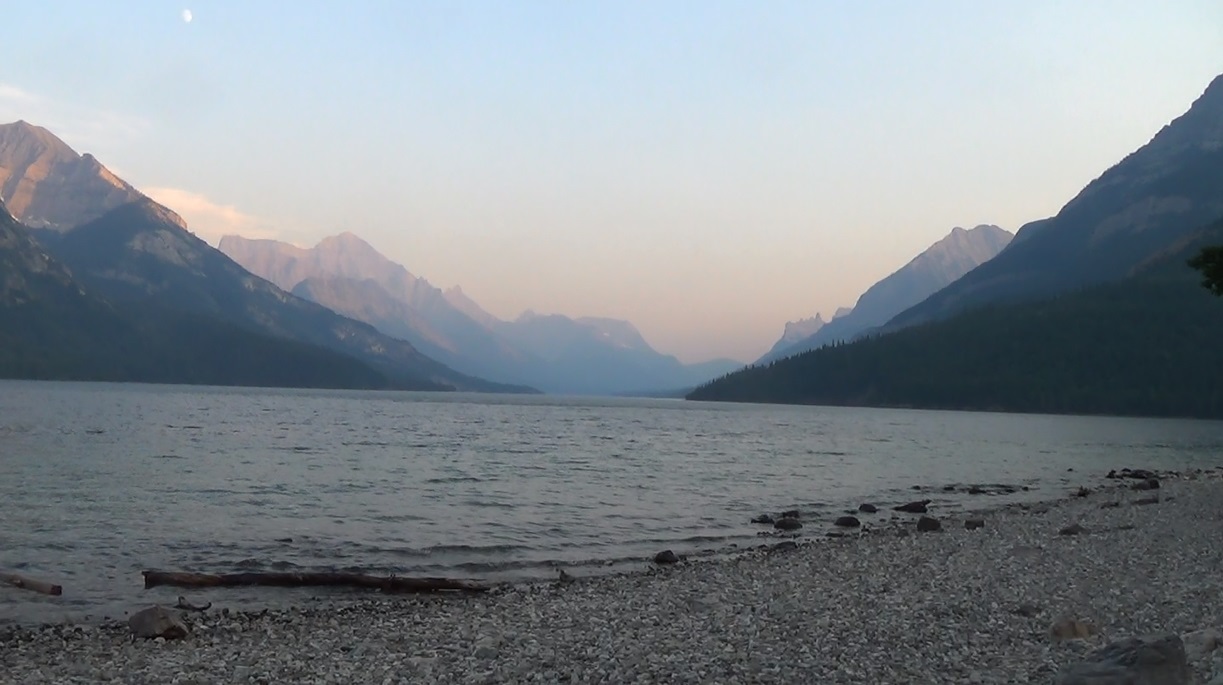
“Kootenai” Brown
As soon as he was released from prison in November, 1877, Brown reunited with his wife and daughters and headed northwest, never to return. He was determined to settle at that beautiful junction of mountains and prairies known as Kootenay Lakes (now known as Waterton Lakes), which he had first seen nearly ten years prior after emerging from the eastern end of the South Kootenai Pass. With Olivia and his children, Brown travelled up the wagon-rutted route of the Whoop-Up Trail, the well-travelled leg of the Old Macleod Trail that connected Fort Benton, Montana, with Fort Whoop-Up (in what his now present-day Lethbridge, Alberta). Shortly after crossing the 49th parallel into Canada, the frontiersman and his family left the trail and travelled west to their destination.
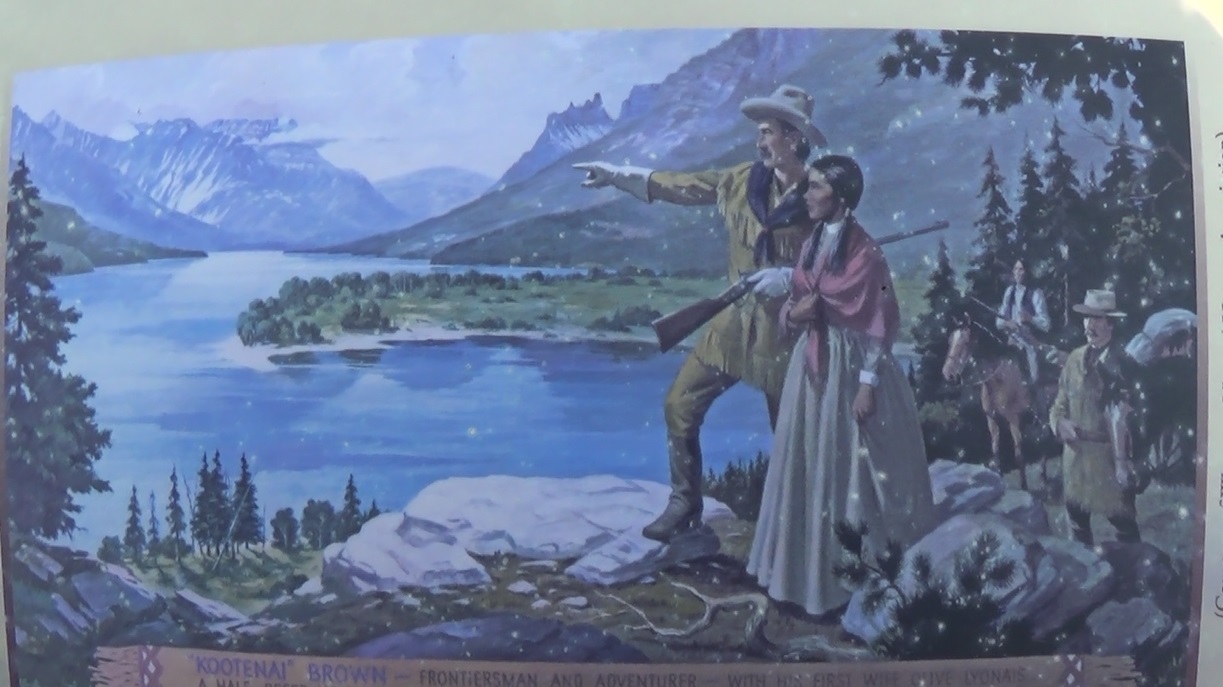
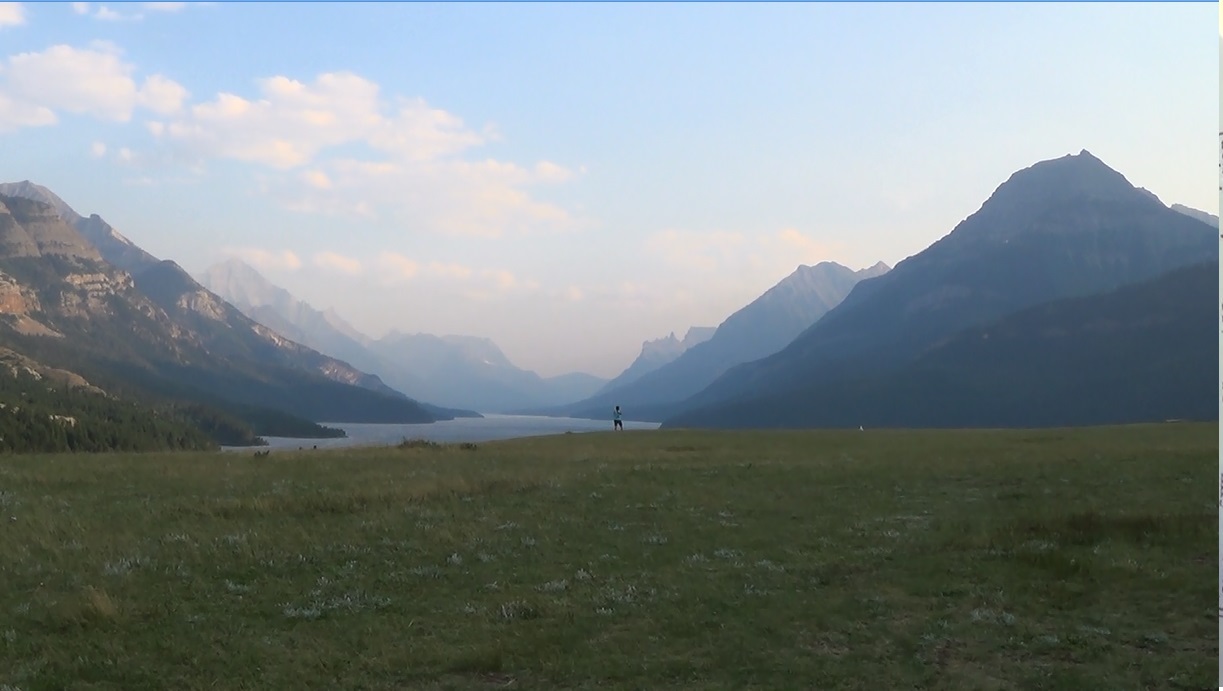
Upon reaching the edge of the Rocky Mountains, Brown built a log cabin right in between the upper and lower Kootenai Lakes. There, he settled down with Olivia and his daughters. For both sustenance and pleasure, he hunted the game that abounded in the region and tried his hand at fishing- a task at which he quickly became proficient. While Brown was on his hunting and fishing trips, Olivia cooked, sewed, prepared hides and looked after their daughters.
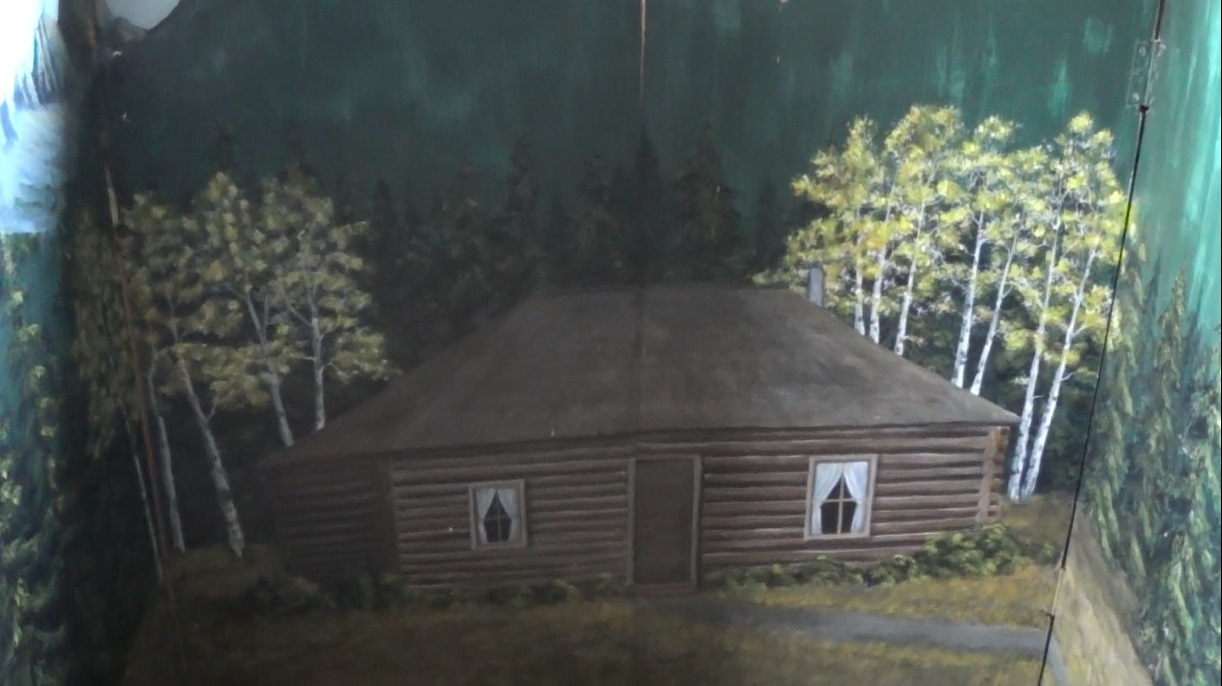
On occasion, Brown visited Fort Macleod to the northeast in order to sell fish that he had caught in the Kootenai Lakes and purchase flour, sugar, tea and other such goods. There, he met his future business partner, Fred Kanouse. Kanouse was a trader and rancher who also lived in the Kootenai Lakes area, having built a cabin on the eastern shore of the Upper Kootenai Lake at the mouth of the South Kootenai Pass. Eventually, the two men went into business together. According to Brown:
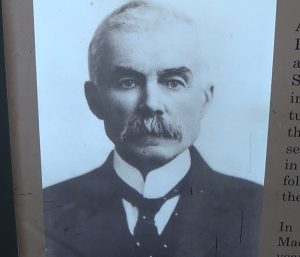
“I remember starting a store at Waterton Lakes on what afterwards became my first homestead… In the store I had a partner, Fred Kanouse, a well-known character around Macleod and Pincher Creek. Fred and I had a stock valued at $4,000 and our customers were Indians, mostly Kootenais, Nez Perces, and Flatheads from the Flat-head Reservation in Montana. Customs regulations didn’t bother them; we didn’t know where the International line was in those days any more than the buffalo did. The Kootenai Indians were friendly with the Blackfeet, but beyond good-humoured joking when they chanced to meet in our stores there was not much intermingling. If one got a chance to steal the others horses there was no hesitation on the part of either Kootenais or Blackfeet. No other tribe of Indians that I know of really liked the Blackfeet.
Well, we started this store in a little log shack on the Lower Waterton
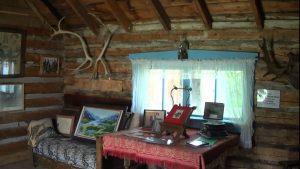 Lake and our supplies were all hauled from Fort Macleod by I.G. Baker bull team… The Kootenais would bring furs out of the mountains and we would trade them dry goods and “wet goods” and provisions. We didn’t sell much whiskey to the Indians although a good deal of it was consumed on the premises. To sell to the Indians was too risky a proposition though it yielded much profit. Our customers were all Indians and to let them get all the whiskey they wanted would mean a carousal in which they might burn up or carry away our stock…
Lake and our supplies were all hauled from Fort Macleod by I.G. Baker bull team… The Kootenais would bring furs out of the mountains and we would trade them dry goods and “wet goods” and provisions. We didn’t sell much whiskey to the Indians although a good deal of it was consumed on the premises. To sell to the Indians was too risky a proposition though it yielded much profit. Our customers were all Indians and to let them get all the whiskey they wanted would mean a carousal in which they might burn up or carry away our stock…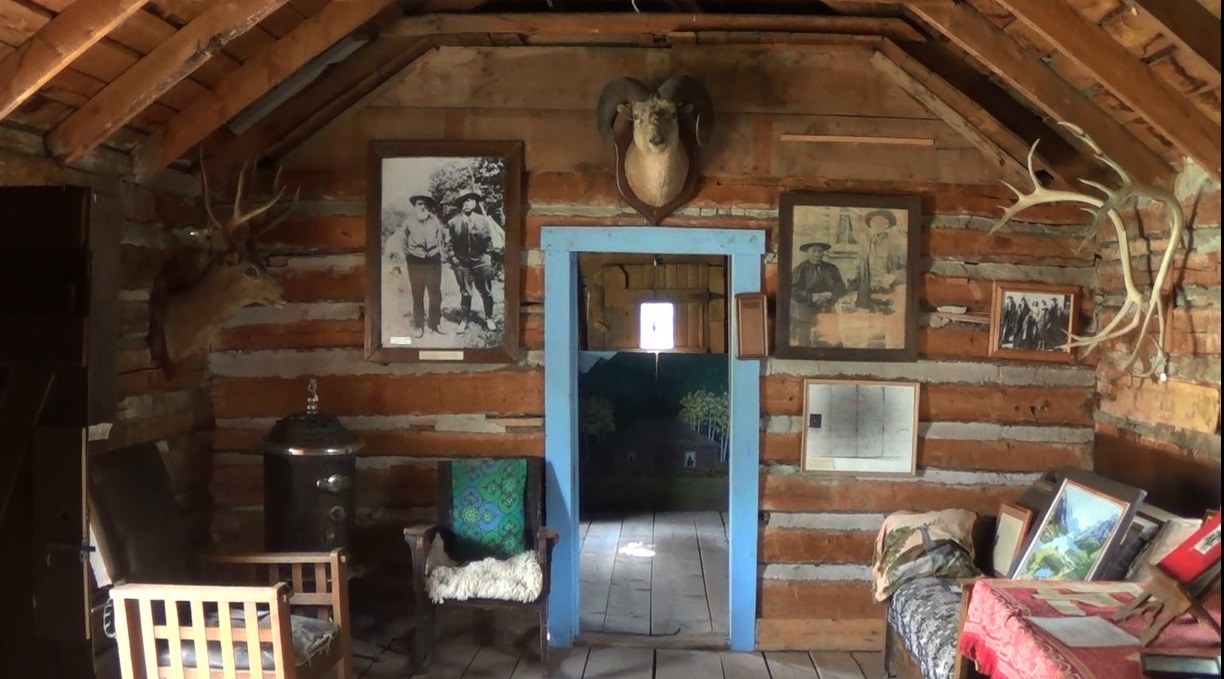
Indians are naturally great gamblers and are very anxious to take part in all games of chance. Someone taught the Flatheads and Kootenais to play poker and this became their great pastime when they visited the store. It took a card shark to beat them. Kanouse was an expert poker-player so he attended to that part of the business. I was a footracer and a good shot and in competitions on the track and with the rifle I could always beat them. We had two good horses and in horse-racing we also got the best of them. In fact, we beat them at every turn…
When the Indians began trading on their side of the line, business went bad with us and I sold my share out to Kanouse for $250. He continued in business a year after I left, when he moved to Macleod and took his stock with him. When I sold my interest in the business I built a log cabin in what was known, when a survey was made, as Section 31, Township 1, Range 29, West of the Fourth Meridian.”
By the time Brown ended his business relationship with Kanouse in the early 1880’s, the area that would become southwestern Alberta was rapidly changing. The war parties of Blackfoot Indians that once roamed the prairies- one of which had terrorized Brown and his companions near present-day Medicine Hat several decades prior- were no more. Small herds of cattle belonging to the area’s first ranchers replaced the massive herds of buffalo that had once covered the plains. Fort Macleod’s red-coated North West Mounted Police replaced Fort Whoop-Up’s buckskinned whiskey traders. And the Canadian Pacific Railway was rapidly advancing west. Brown strove to carve out a place for himself in this new era by marketing himself as a tour guide for ranching investors, wealthy sportsmen and railway surveyors.
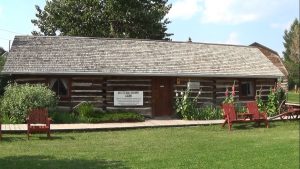
In the following years, Brown spent his time guiding, hunting and fishing throughout the Kootenai Lakes area. In time, he became widely known throughout the region. The people of Fort Macleod– who knew middle-aged frontiersman for his backcountry prowess, the succulent trout, whitefish and pike that he sold on his infrequent visits to the community, and his love for the Kootenai Lakes- gave him the nickname that history would remember him by: Kootenai Brown.
Olivia’s Death
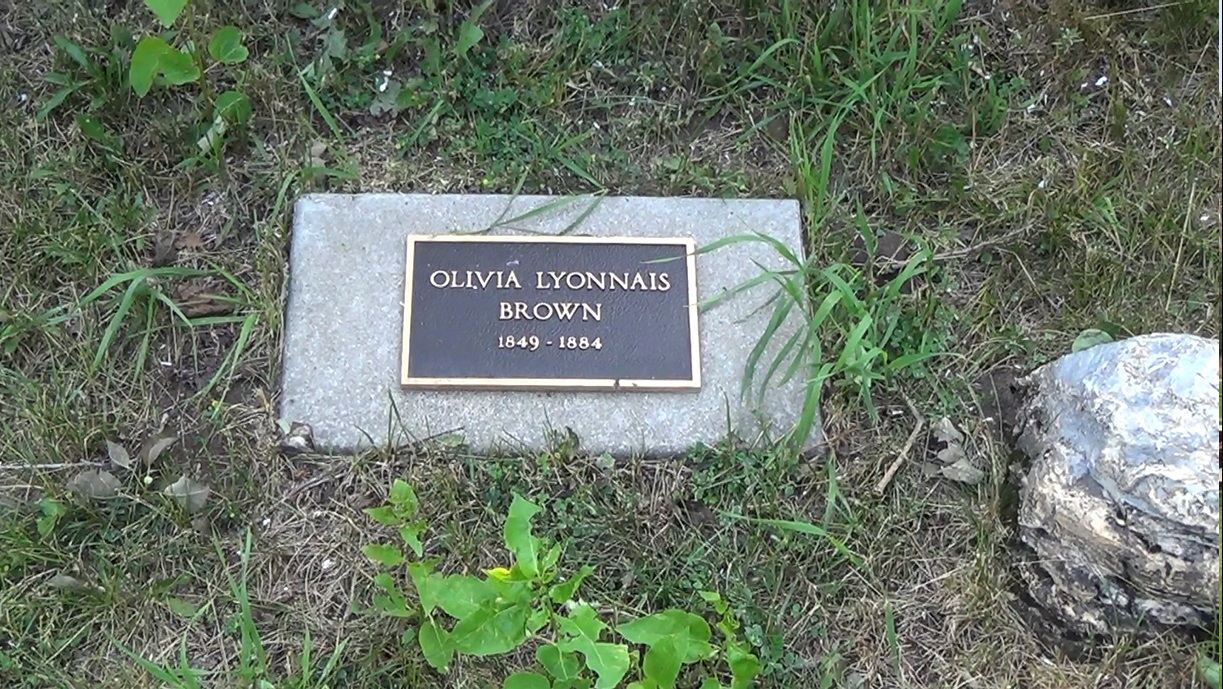
Sometime in 1883, Olivia, Brown’s beautiful Metis wife, gave birth to Leo, their first and only son. As Brown and his family lived far from the nearest doctor, Olivia was forced to deliver the baby on her own, with the assistance of a Stony midwife. Olivia fell ill as a result of the crude birthing and never fully recovered. Brown- who, out of necessity, spent much of his time hunting and fishing in the mountains and lakes- didn’t realize the extent of his wife’s illness until it was too late. Brown’s long absences from the home, and Olivia’s subsequent loneliness, only exacerbated her condition. According to Mary Rose Smith, a Metis writer from Pincher Creek, Alberta, who would meet Brown in the mid 1880’s:
“Brown didn’t realize how sick his wife was, even when she tried to tell him. So between sickness and loneliness, with only Indians for company, she kept getting worse and worse and the care of the three children was too much for her.”
Sometime between the autumn of 1883 and the spring of 1885, when Brown was away from the home, Olivia died. Upon returning home, Brown- heartbroken and plagued with self-loathing- buried her on the western shore of Lower Kootenai Lake, across from Chief Mountain.
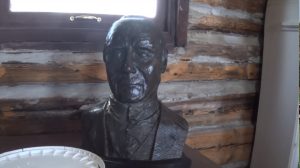
Unable to care for his three children on his own, Brown traveled to Fort Macleod, sought out Father Albert Lacombe- the famous Catholic missionary loved by Indians and white men alike- and entreated his advice. Lacombe advised Brown to enroll his son Leo in the mission school at St. Albert, Alberta, and, using his considerable influence, helped Brown to do so once he consented. The missionary likely made appropriate arrangements for Brown’s daughters as well, although there are no records to verify this.
The Rocky Mountain Rangers
In the spring of 1885, Brown went on a long hunting trip in the mountains. In the midst of his trip, the Metis revolutionary Louis Riel returned to the Canadian Red River Valley from his exile in the United States and started a prairie war that would become known as the Northwest Rebellion. When Brown was returning from his trip, he met William F. Cochrane, a local rancher, at the ford of the Waterton River and learned of the uprising. Immediately, he rode on to the barracks at Fort Macleod and offered his services to the militia cavalry being raised by John Stewart- a rancher and former Militia Cavalry Captain- called the Rocky Mountain Rangers. Due to his considerable frontier experience and his knowledge of several Indian languages, he secured the position of Chief Scout in troop Number 1.
The 114-man Rocky Mountain Rangers- which was divided into three troops of roughly 40 men- drilled at Fort Macleod for two weeks. On April 29, 1885, troops 1 and 2 rode out southeast from Macleod, sent off by a large and enthusiastic crowd of locals (troop number 3 remained in the Fort Macleod- Pincher Creek area in order to defend against the local Blackfoot in the event that chiefs Red Crow and Crowfoot allied with Riel). They were charged with patrolling the half-built Galt Railway Line that stretched between Dunmore (a settlement just east of Medicine Hat) and Coal Banks (present-day Lethbridge, Alberta), keeping Metis soldiers from taking refuge in the Cypress Hills, and preventing American Indians sympathetic towards Riel’s cause from crossing the border into Canada. Brown, along with Scouts Aaron Vice and John M. “Rattlesnake Jack” Robson, led the troops on the initial march east past Coal Banks (where troop 2 went north to patrol the area west of High River), down the Galt Railway to Medicine Hat.
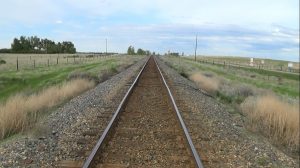
Upon reaching Medicine Hat, the Rangers established a headquarters on the South Saskatchewan River. After recruiting more men from Medicine Hat and the Cypress Hills, the Rangers set out on their scheduled patrols. On one such patrol along the Galt Railway Line, on the banks of Seven Person’s Creek just southwest of Medicine Hat, Brown came to the site of his skirmish with the Blackfoot in which he received an arrow to the back twenty years prior. Brown, with the help of some Rangers, discovered a number of grisly relics of the skirmish: five slugs embedded in cottonwoods on the creek bank, and two sun-bleached Indian skulls. On another fateful patrol, Brown met a Cree woman named Isabella (her Cree name was Chepaykwakasoon, or The Blue Flash of Lightning) who would one day become his wife.
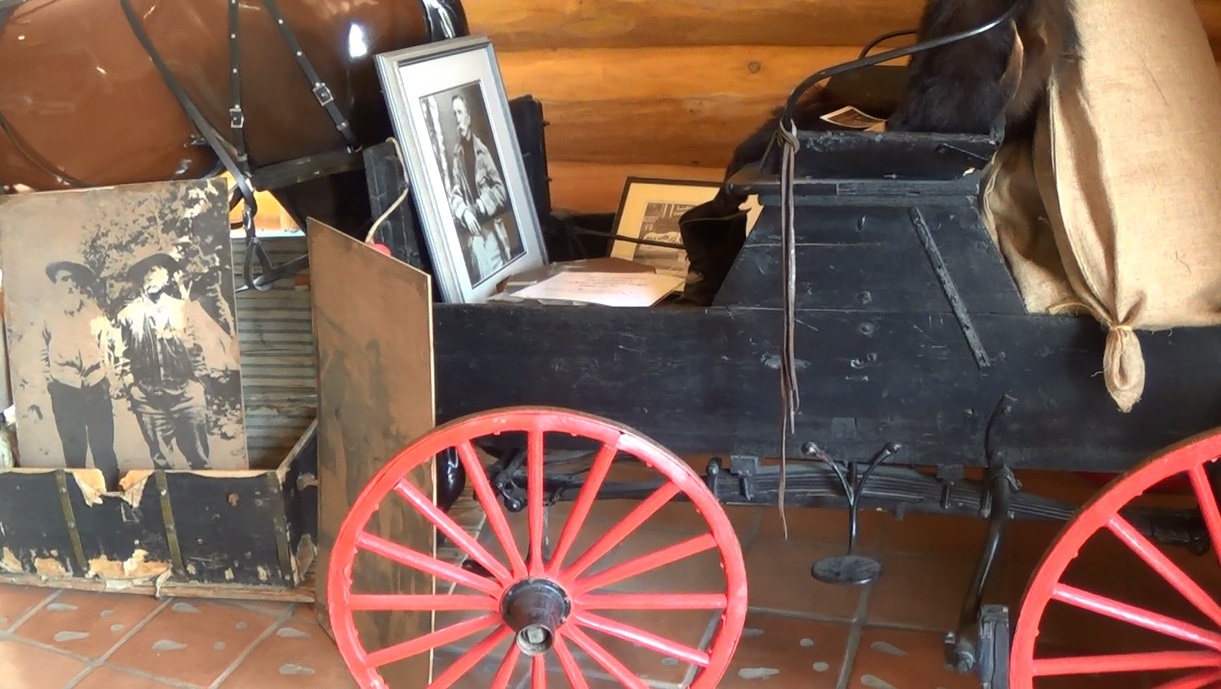
The Northwest Rebellion effectually ended after the Battle of Loon Lake and the subsequent surrender of Cree war chief Wandering Spirit on June 3, 1885. After three months of uneventful patrolling, on July 8, the Rocky Mountain Rangers returned to Fort Macleod.
Later Life
After being paid for his service with the Rocky Mountain Rangers, Brown returned to his home in the Kootenay Lakes, where he resumed his occupation of hunting and fishing. About a year later, in the early spring of 1886, he fell seriously ill. His friend William F. Cochrane, while searching for stray cattle, decided to check in on Brown and found him close to death. After looking after the frontiersman as best he could, Cochrane rode to Fort Macleod and informed Dr. Kennedy, a North West Mounted Police physician, of Brown’s condition. On Kennedy’s advice, Cochrane returned to the Kootenay Lakes and brought Brown into town.
Brown recovered from his illness in Fort Macleod’s NWMP hospital. After his brush with death- a stark reminder of the dangers of living alone- the middle-aged frontiersman knew that he needed a companion. Accordingly, he rode out east and promptly married the Cree Isabella, whom he had met during his service with the Rocky Mountain Rangers. In the years to come, he would refer his stolid, hardy wife as Nichemoos, the Cree equivalent of “dear”.

In June 1888, Brown was hired as a packer by the NWMP and given the opportunity to revisit Wild Horse Creek, where he had once prospected and briefly worked as a Constable for the Colony of British Columbia’s Civil Service many years prior. A year earlier, in 1887, three Canadian officials- the NWMP Commissioner, the Superintendent of Indian Affairs in British Columbia, and the Gold Commissioner of the Kootenay District- travelled to Galbraith’s Ferry, a town situated on the confluence of Wild Horse Creek and the Kootenay River, to investigate reports of the disgruntled state of the local Kootenay Indians. The government men determined that the situation was grave enough to warrant NWMP intervention. Accordingly, 77 of Fort Macleod’s Mounties, under the command of Superintendent Sam Steele, were dispatched to the area and quickly re-established law and order. The townspeople were so grateful to the Mounties for keeping the peace that they renamed their town Fort Steele. In June 1886, when their presence was no longer required, Steele’s Mounties were ordered to return to Fort Macleod. Brown- who joined the Mounties at Fort Steele in early June- was hired to assist with their return by riding with the pack train from Fort Steele, through the Crowsnest Pass, to Kootenay (Waterton) Lakes and cache day’s supplies of oats and biscuits at appropriate intervals along the route. As a packer, Brown was also tasked with taking care of the pack horses and packing and unpacking equipment. Coincidentally, one of the three government men who had authorized the Mounty intervention at Wild Horse Creek, the Gold Commissioner of the Kootenay District, was none other than Arthur Vowell, Brown’s old friend and partner who had travelled with him from Ireland to the Americas in 1862.
Three years later, in 1889, Brown discovered oil in the Kootenay Lakes area and became the first petroleum pioneer in a soon-to-be province that would one day become internationally renowned for its subterranean riches. Brown used the crude he produced as a lubricant for his wagons. Shortly after the discovery, the Kootenay Lakes area became the site of a short lived oil boom.
Brown spent the rest of his days in the Kootenay Lakes area with his Cree wife Isabella.
In 1897, when the Crowsnest Line was being built through the Crowsnest Pass, Brown freighted goods and equipment for the CPR. In later years, he was instrumental in turning the Kootenay Lakes area into the Kootenay Forest Reserve, in which he worked as a fishery officer. Later still, due largely to Brown’s efforts, the area was converted into the famous Waterton Lakes National Park, in which he worked as a park ranger for the rest of his days. On July 18, 1916, Brown passed away in his sleep. Today, the beautiful Waterton Lakes National Park survives as the legacy of the great Canadian frontiersman.
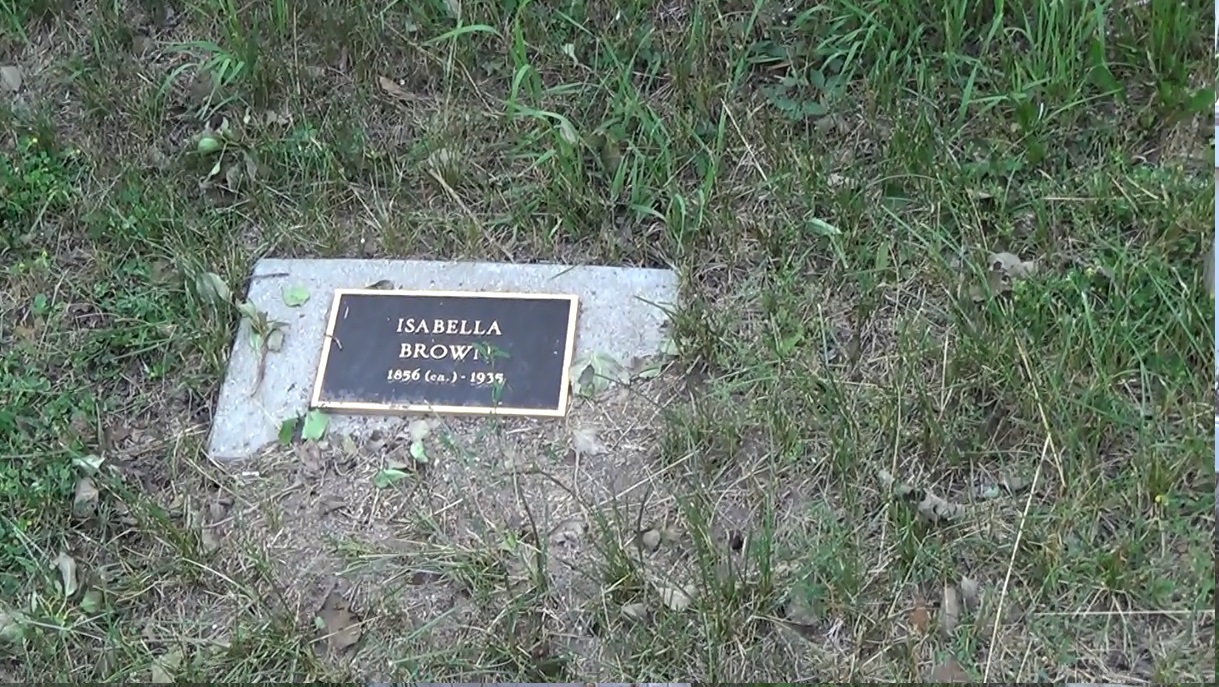
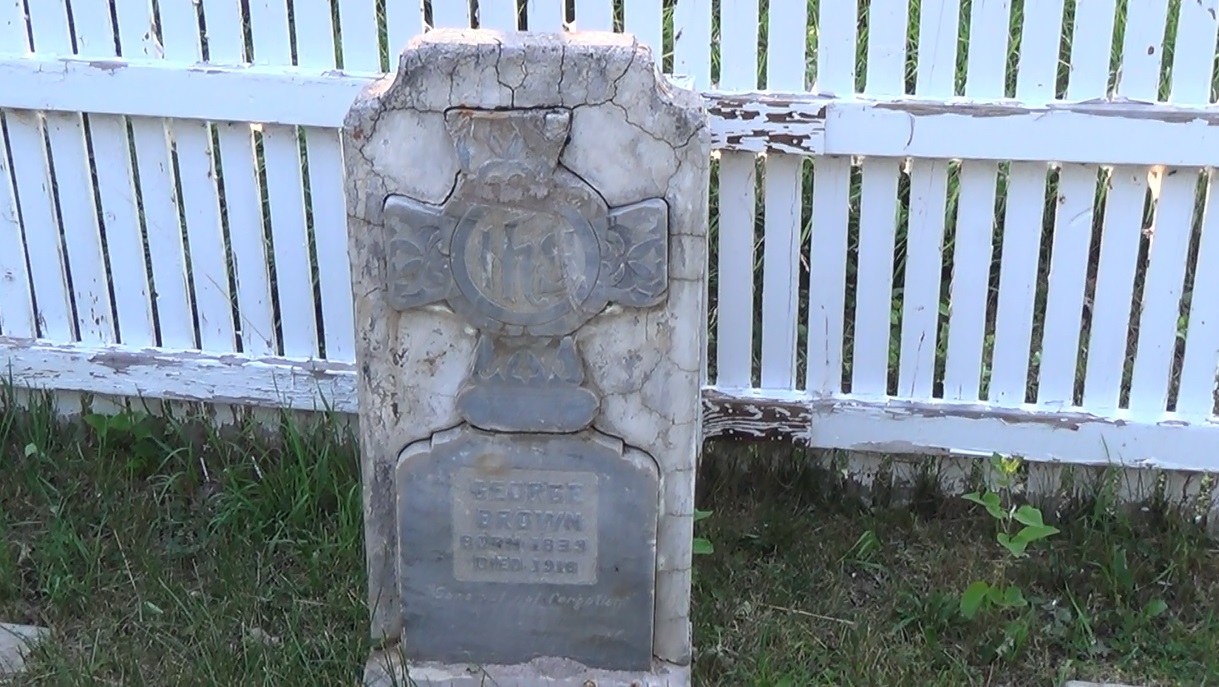
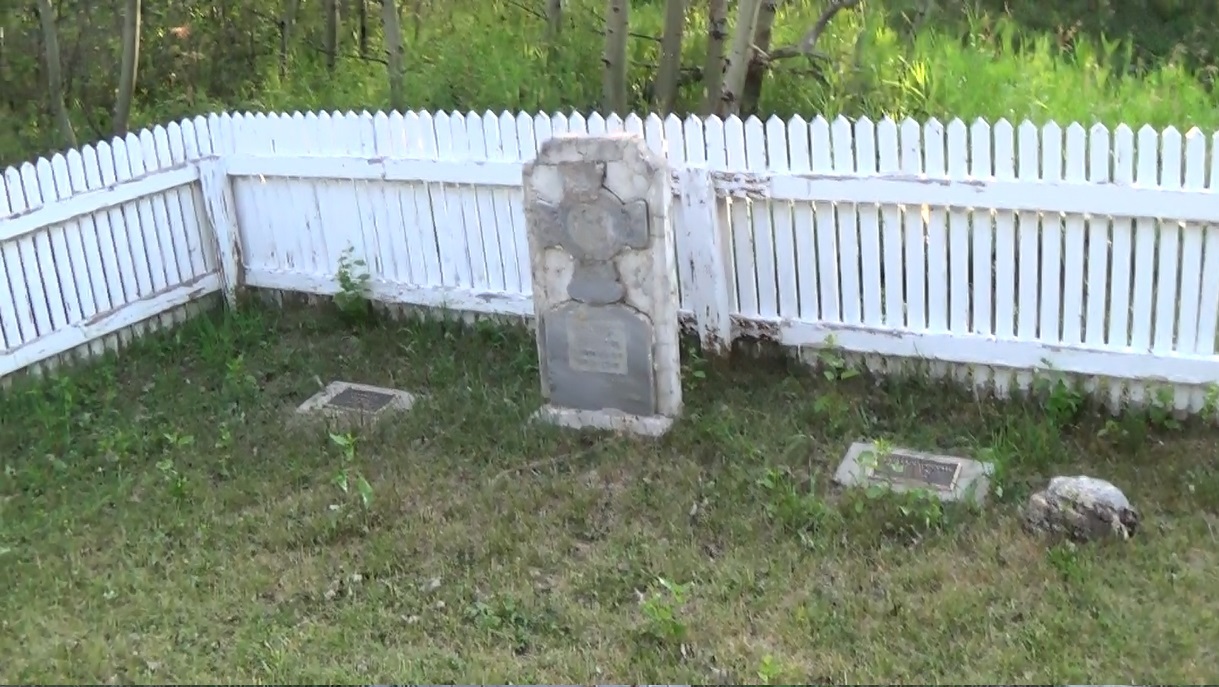
Sources
- Kootenai Brown: The Unknown Frontiersman, 1996, William Rodney
W. Robert Mitchell
As a great grandson of Kootenai, I have read a number of items concerning Kootenai, including the book by William Rodney. More than 50 years ago I read a book that was in the rare book room of the Rutherford library at the University of Alberta. The book consisted of two parts, one called the legend of Kootenai Brown but I am unable to recall the description of the other part. My recollection is that that book was published in Medicine Hat, Alberta. My mother’s maiden name is Edna Ada Brown.
W. Robert Mitchell
As a great grandson of Kootenai, I have read a number of items concerning Kootenai, including the book by William Rodney. More than 50 years ago I read a book that was in the rare book room of the Rutherford library at the University of Alberta. The book consisted of two parts, one called the legend of Kootenai Brown but I am unable to recall the description of the other part. My recollection is that that book was published in Medicine Hat, Alberta. My mother’s maiden name is Edna Ada Brown.
W. Robert Mitchell
battlinbugs@gmail.com